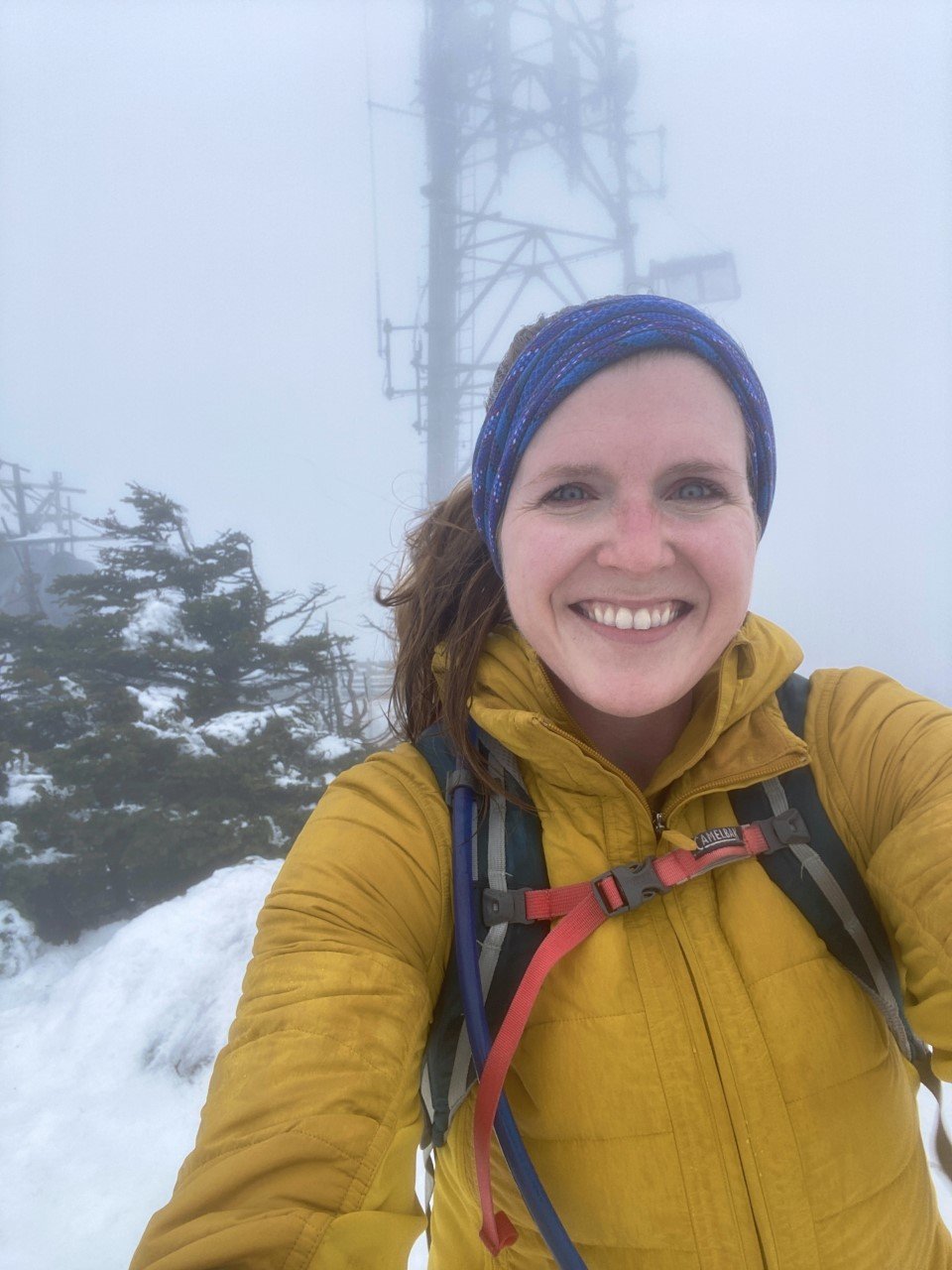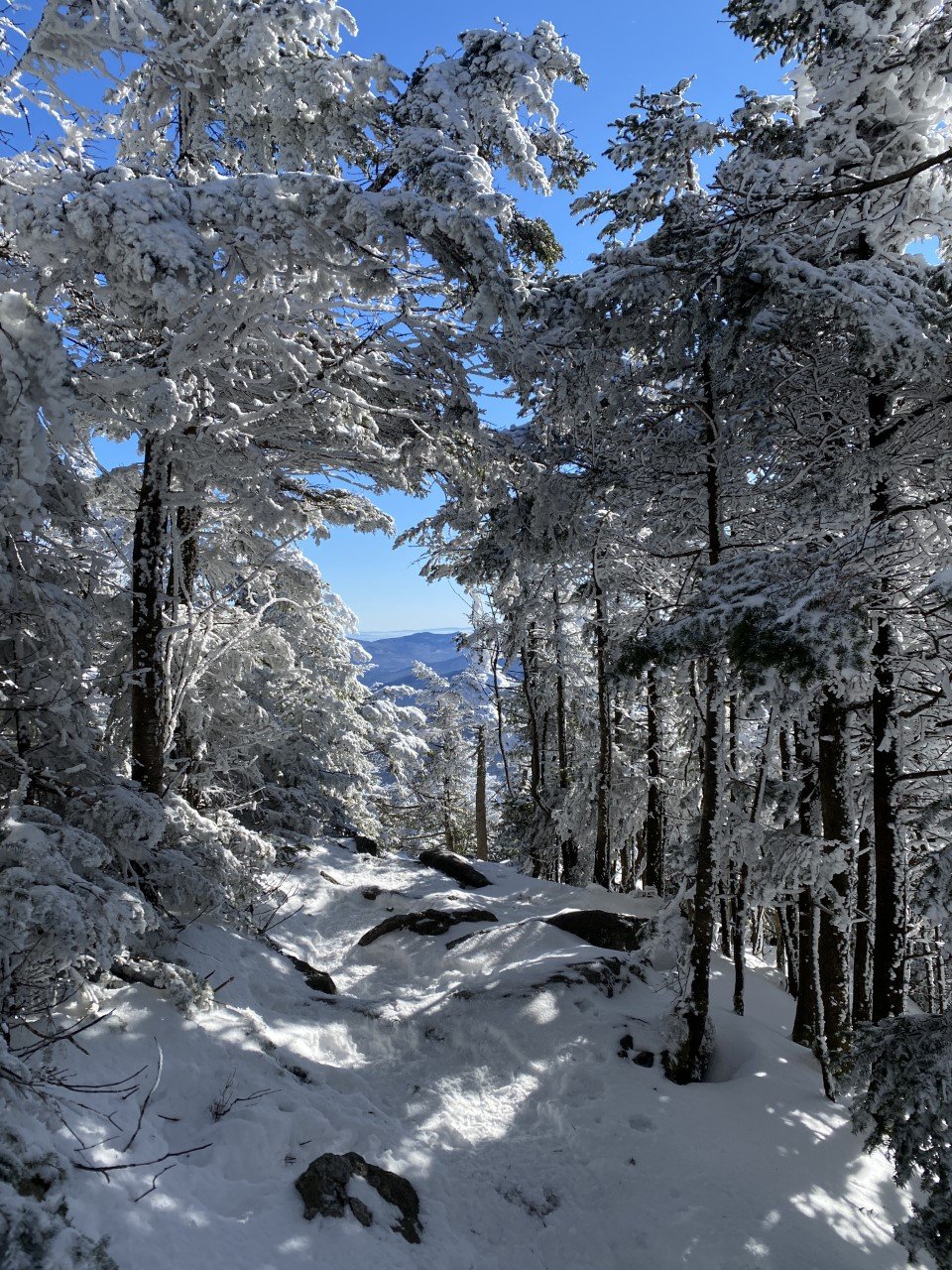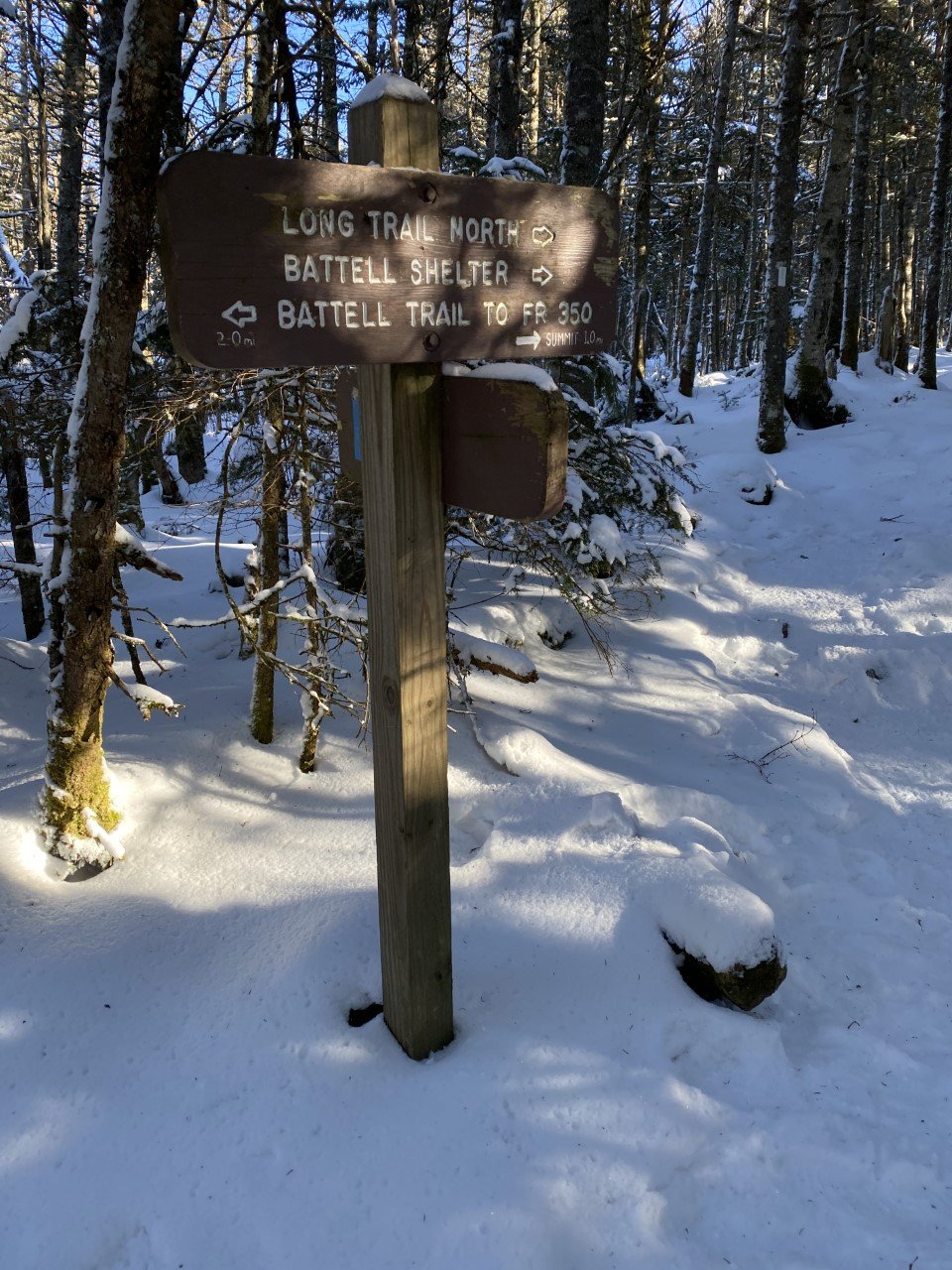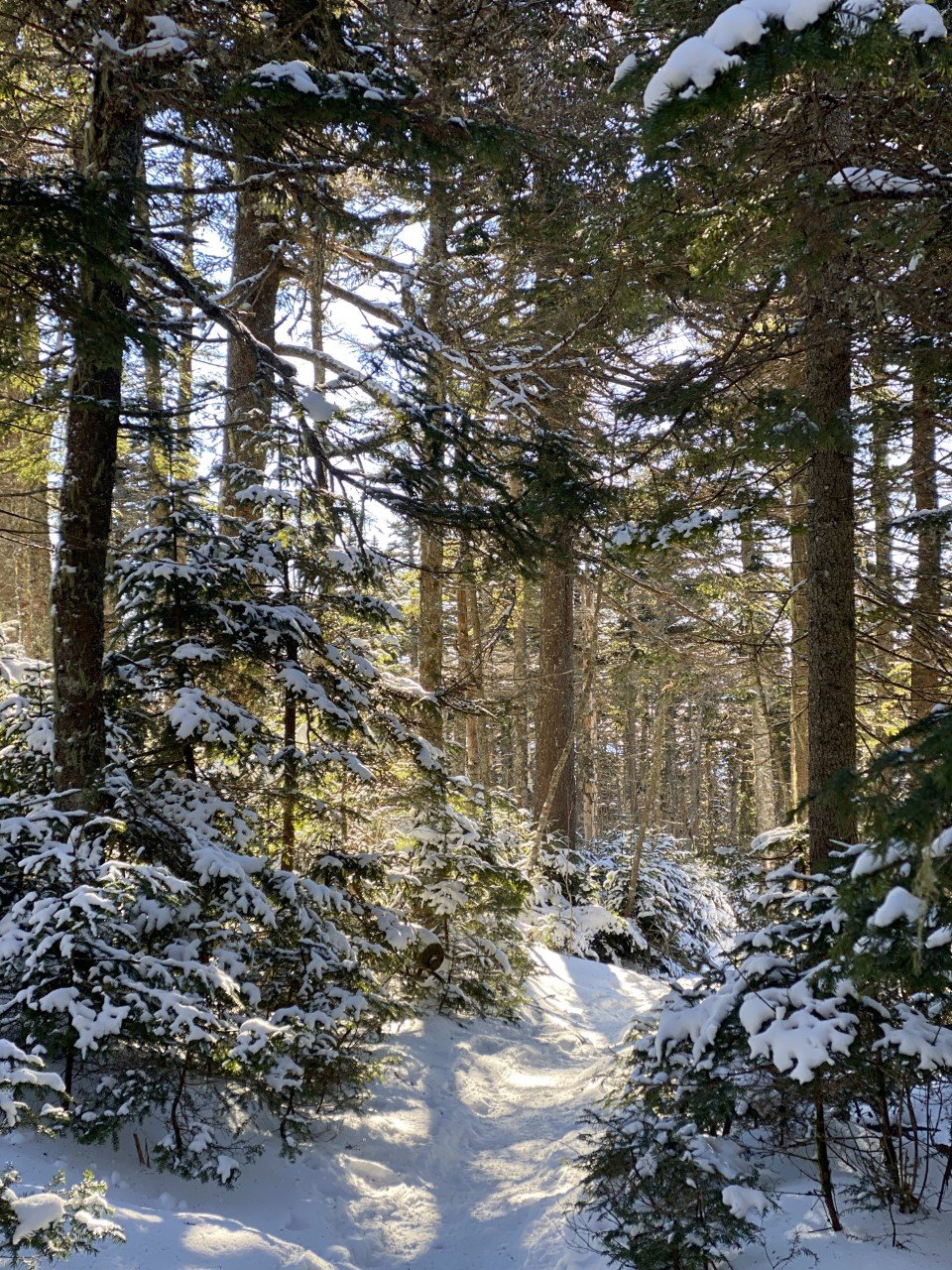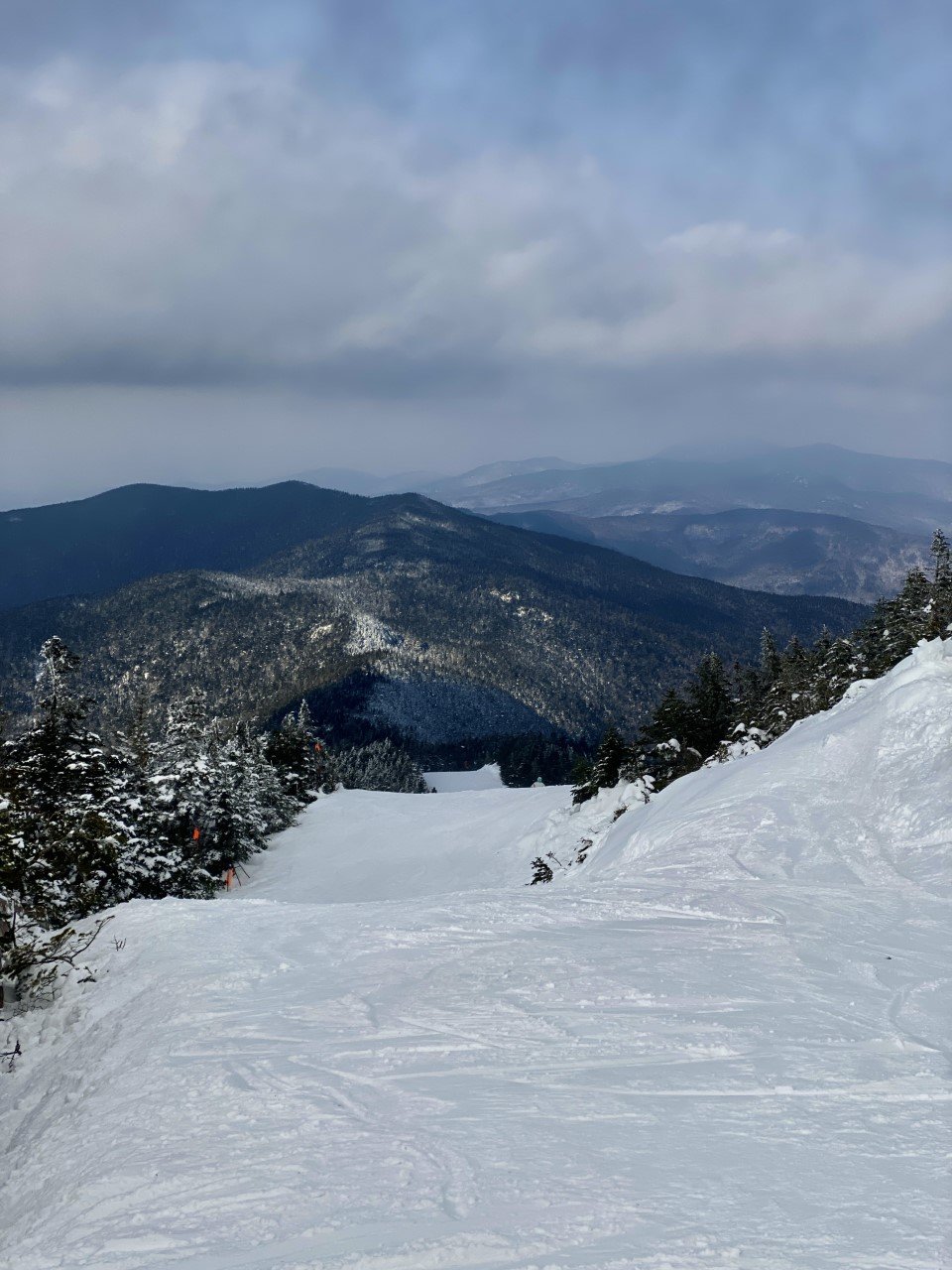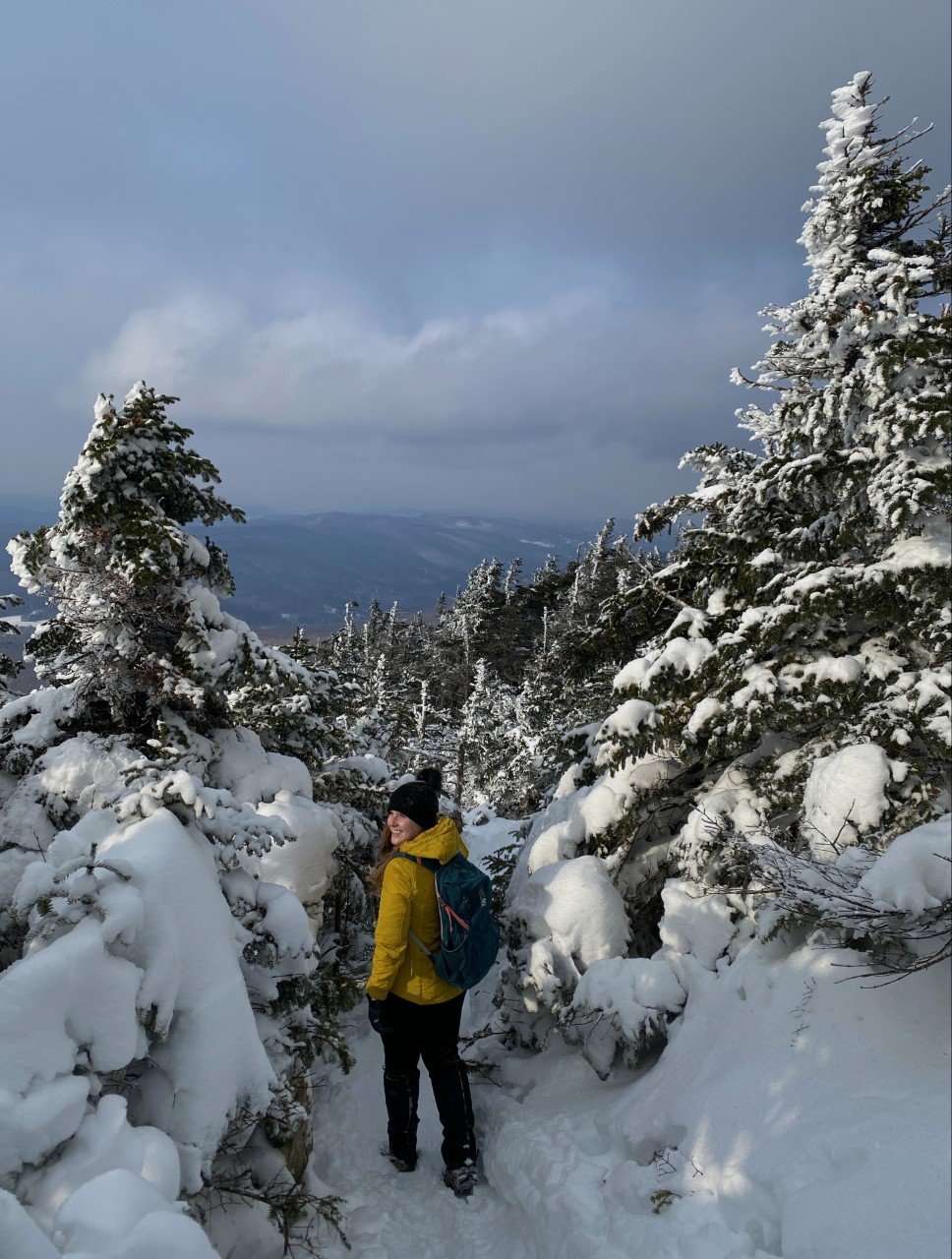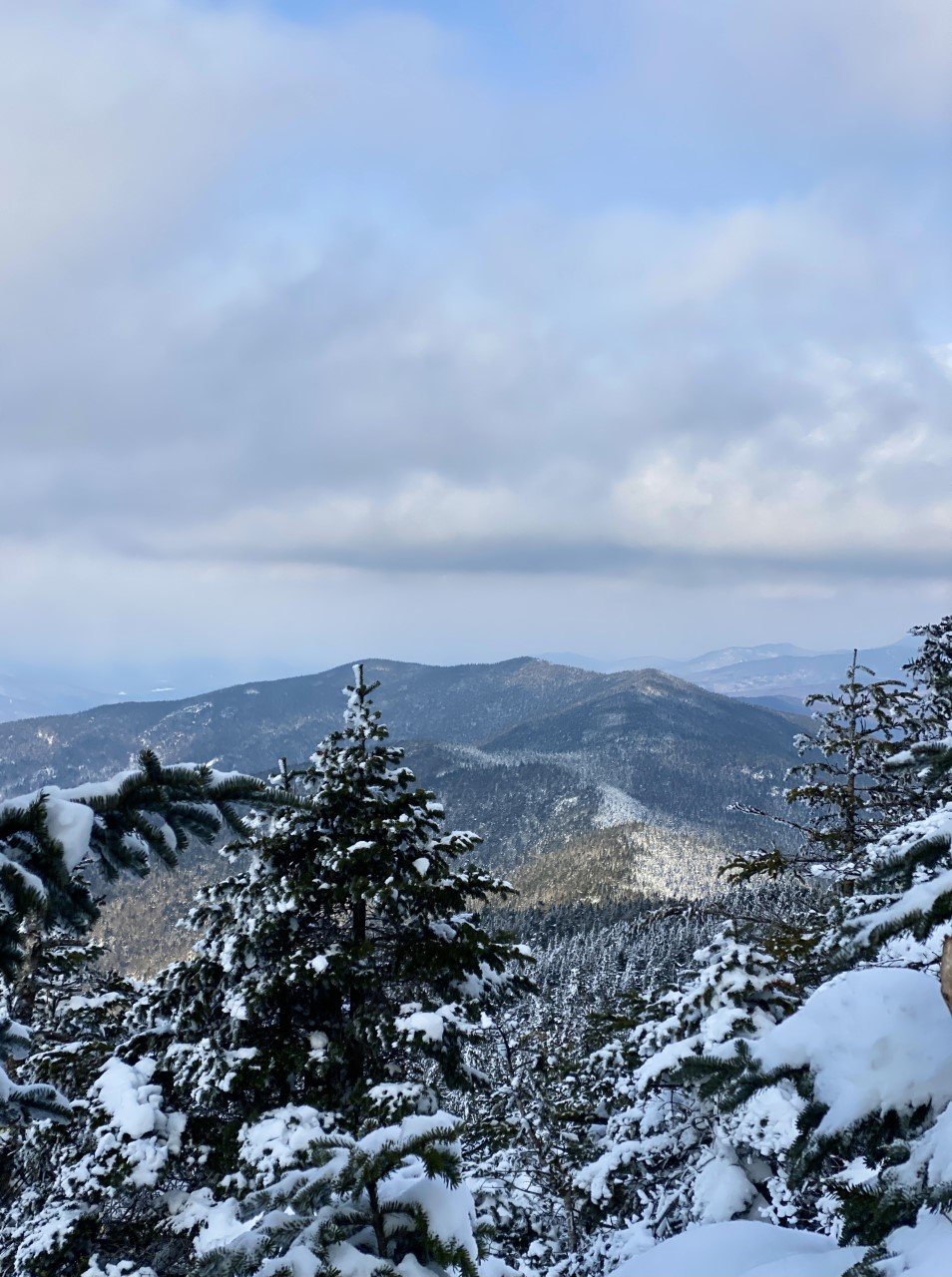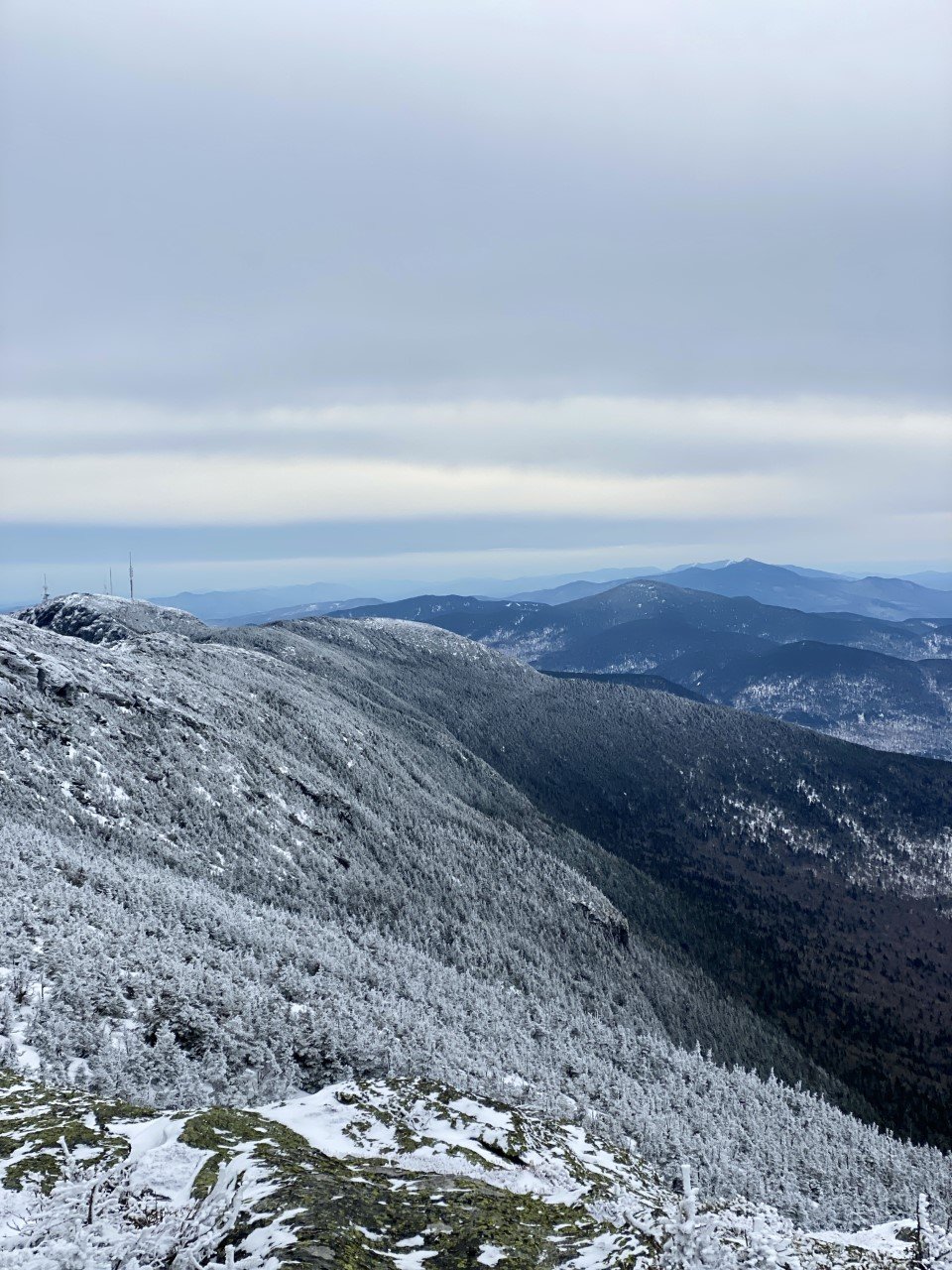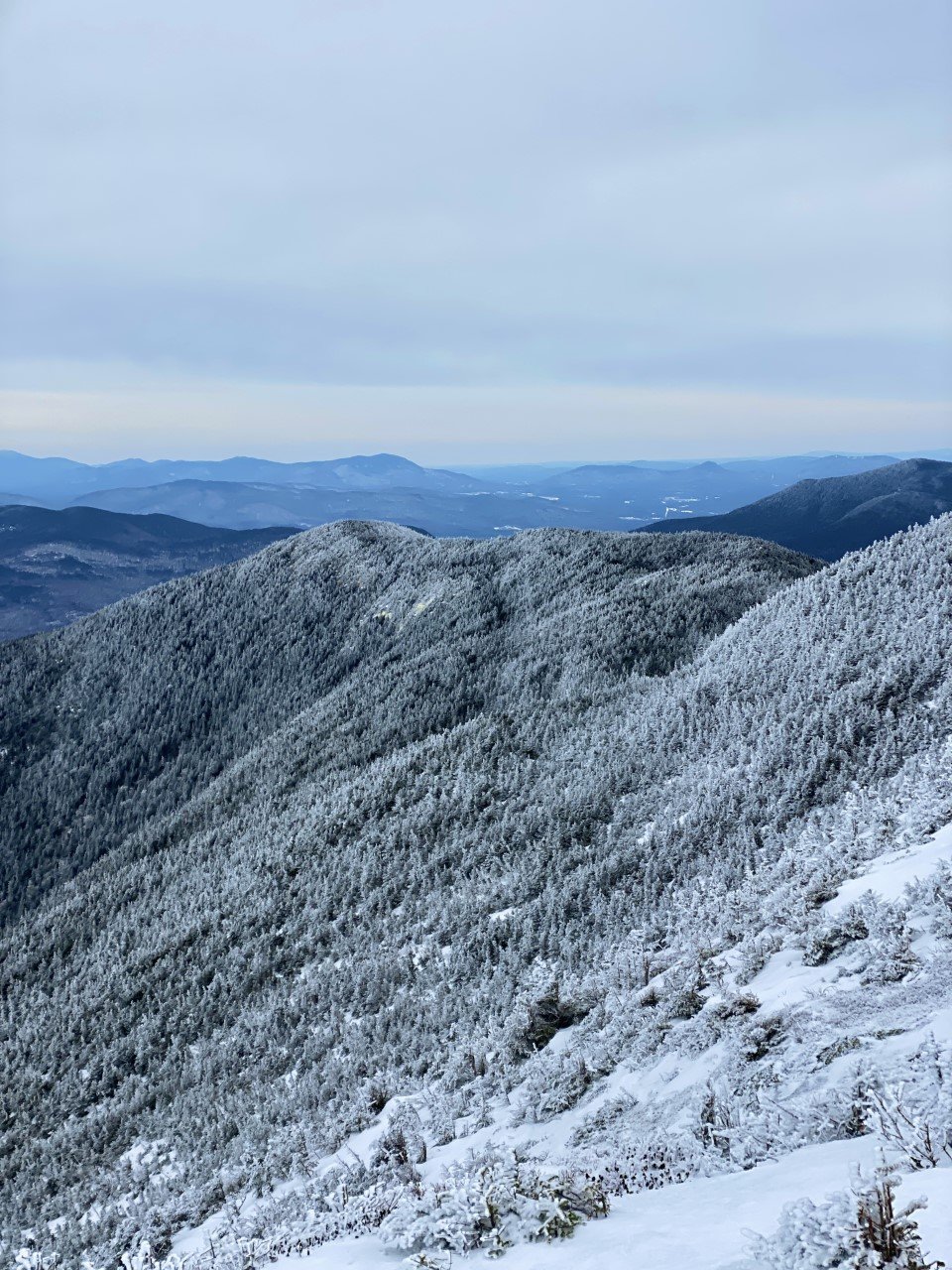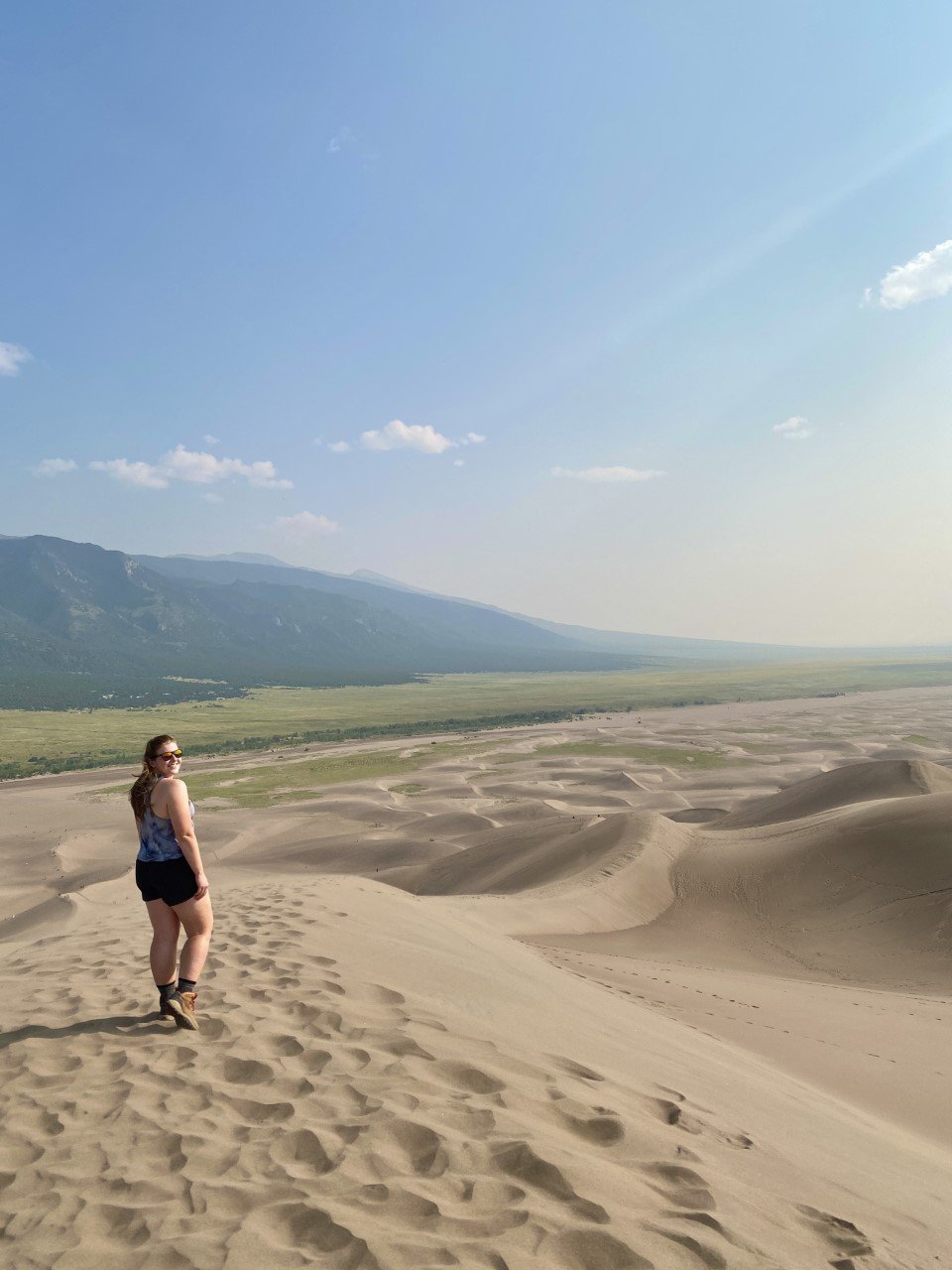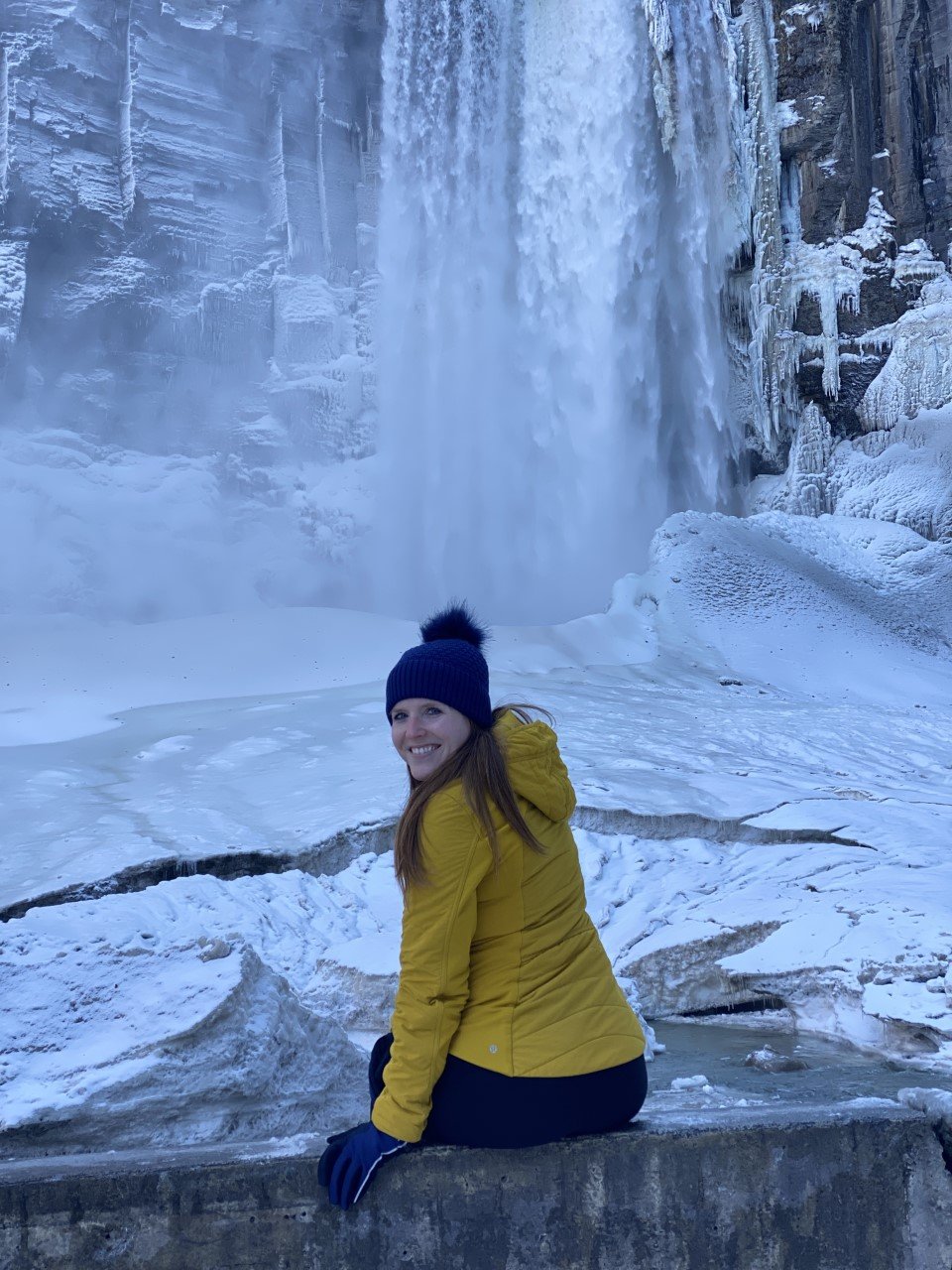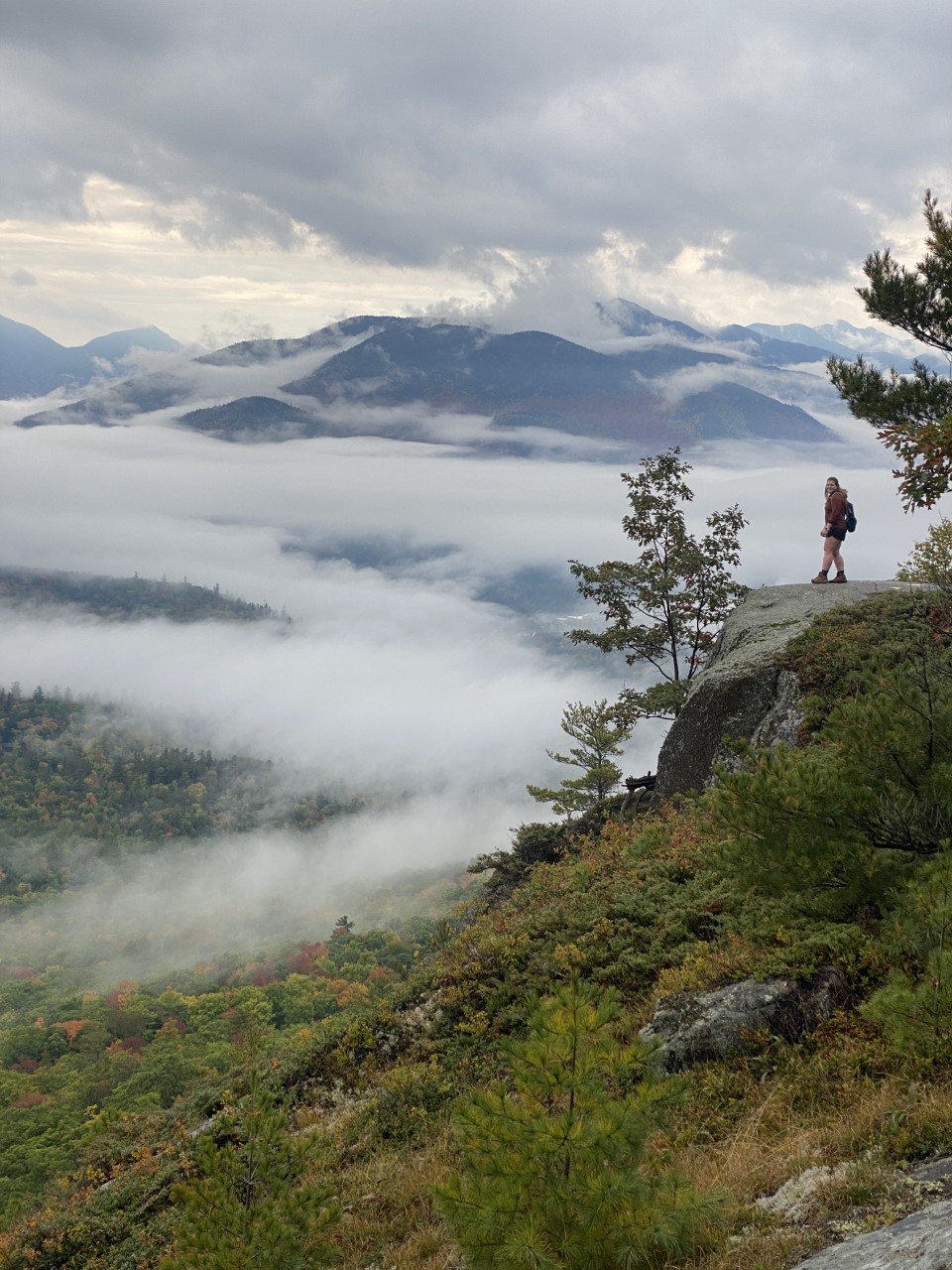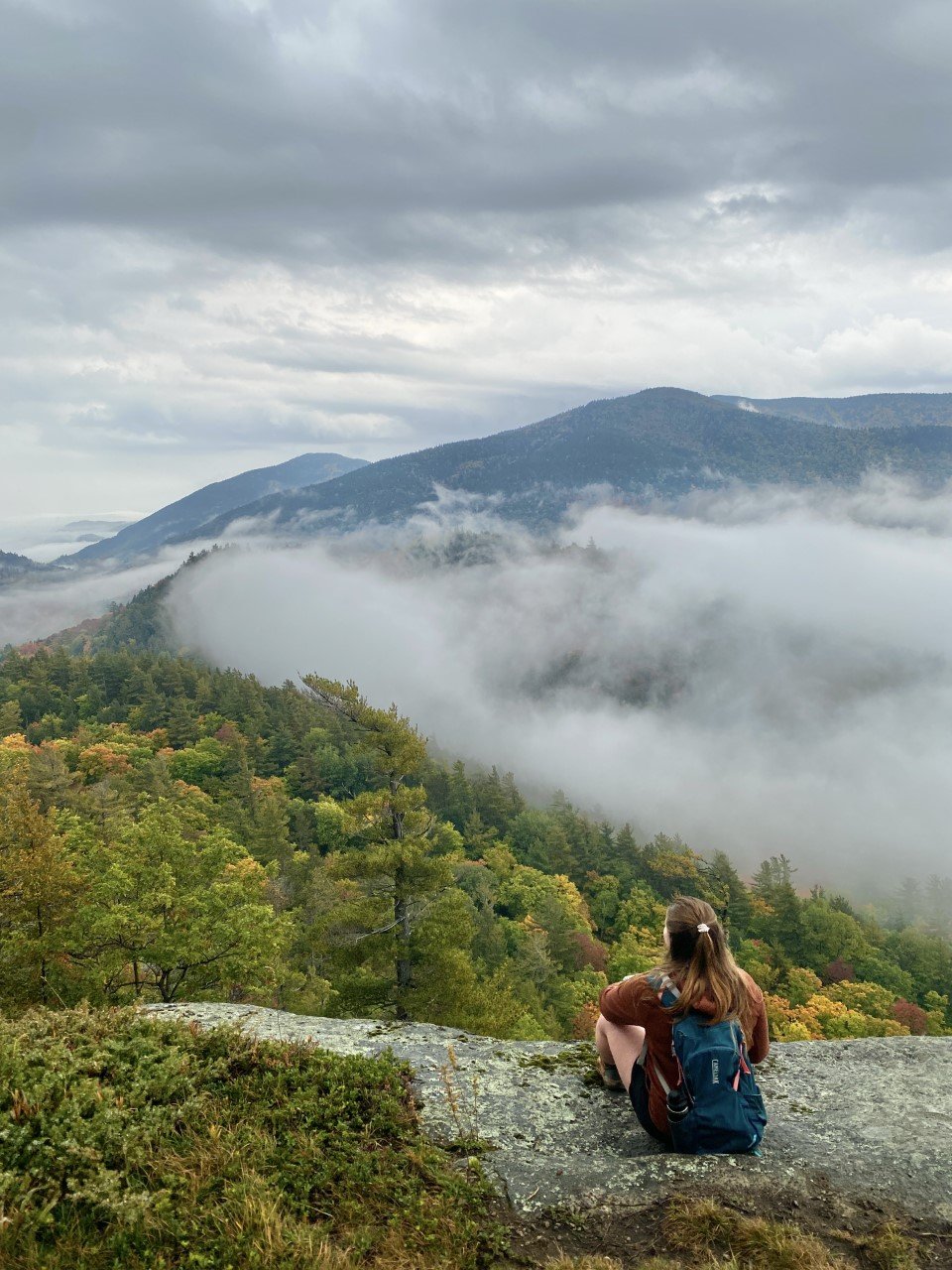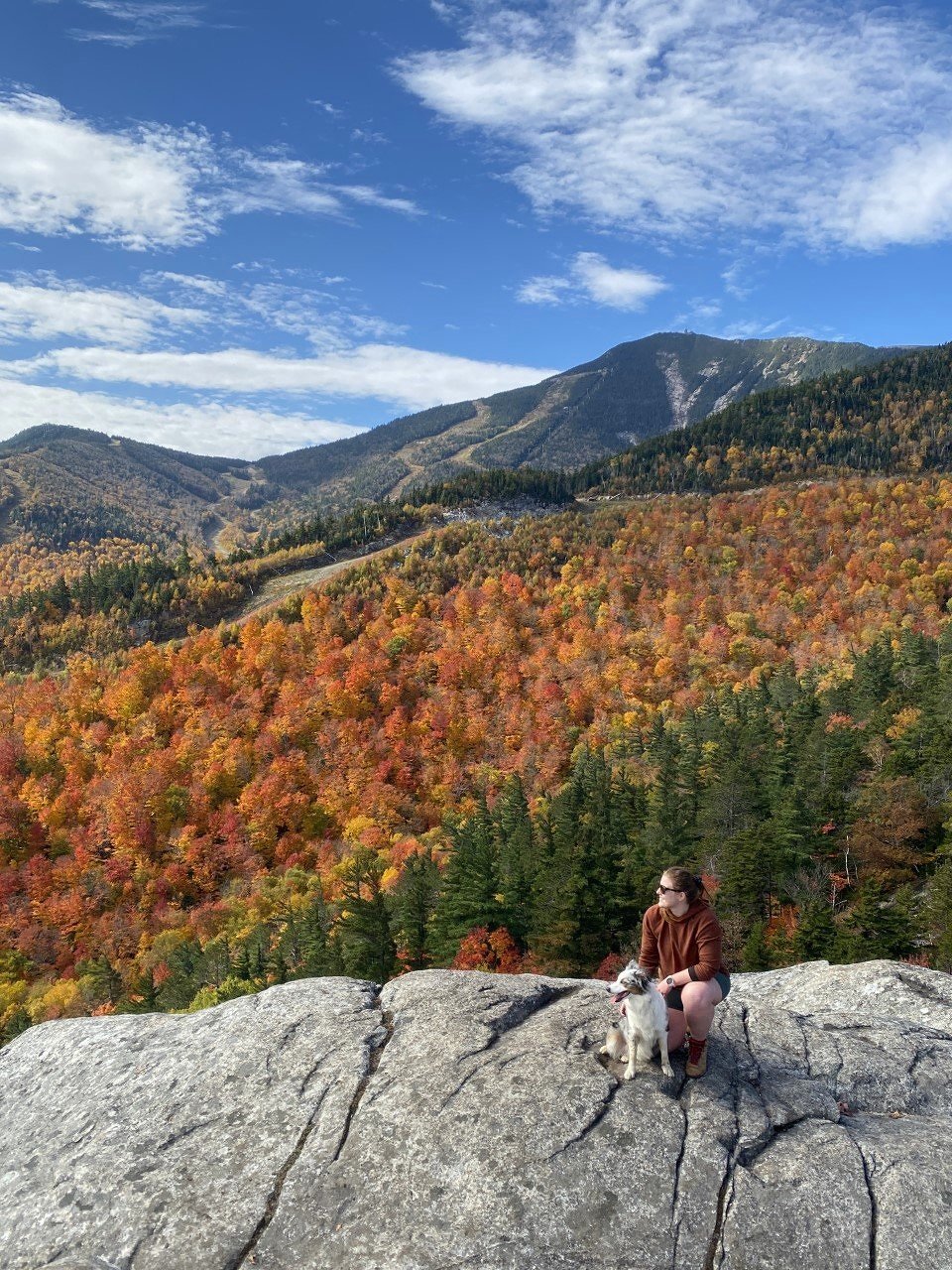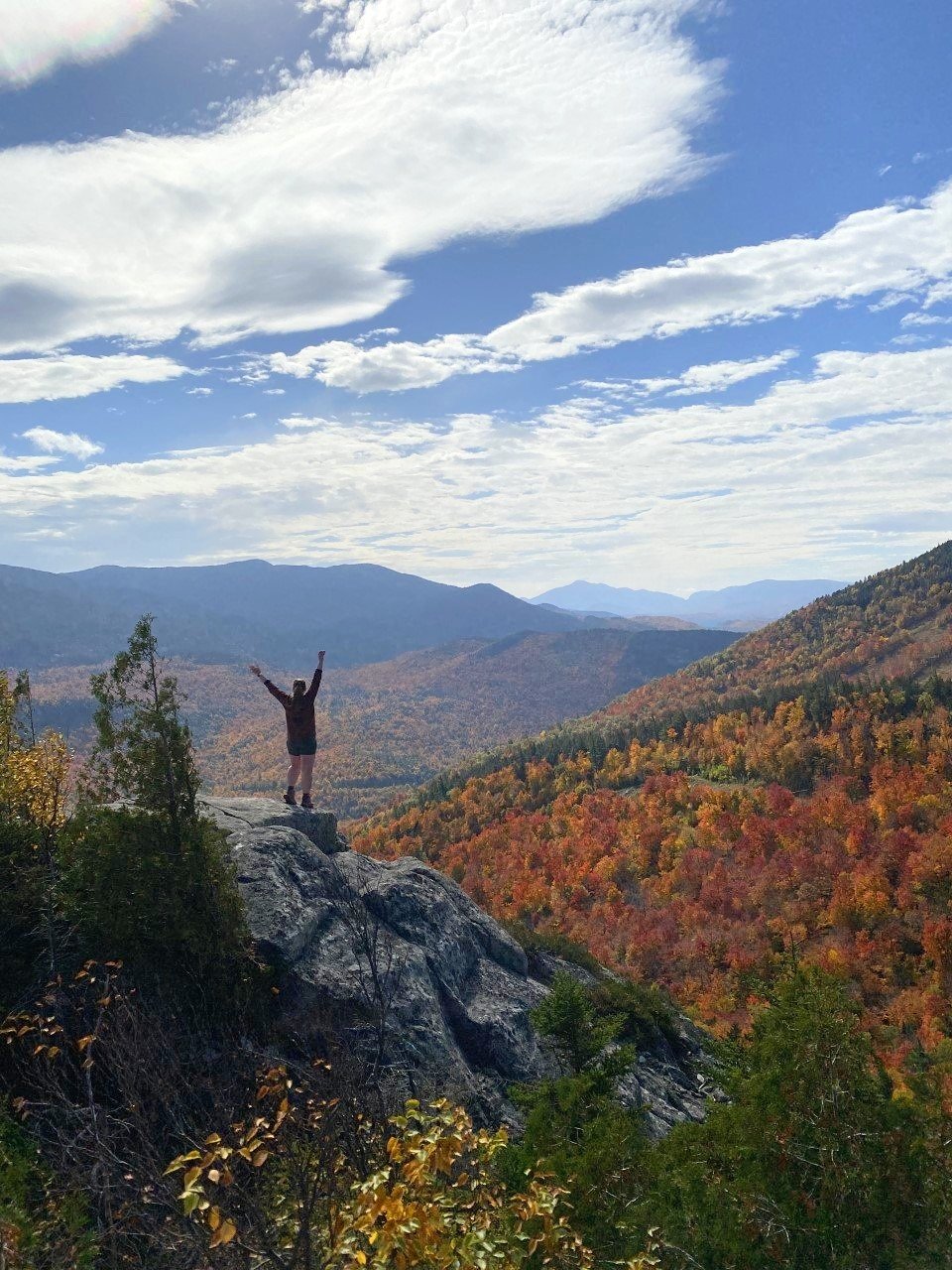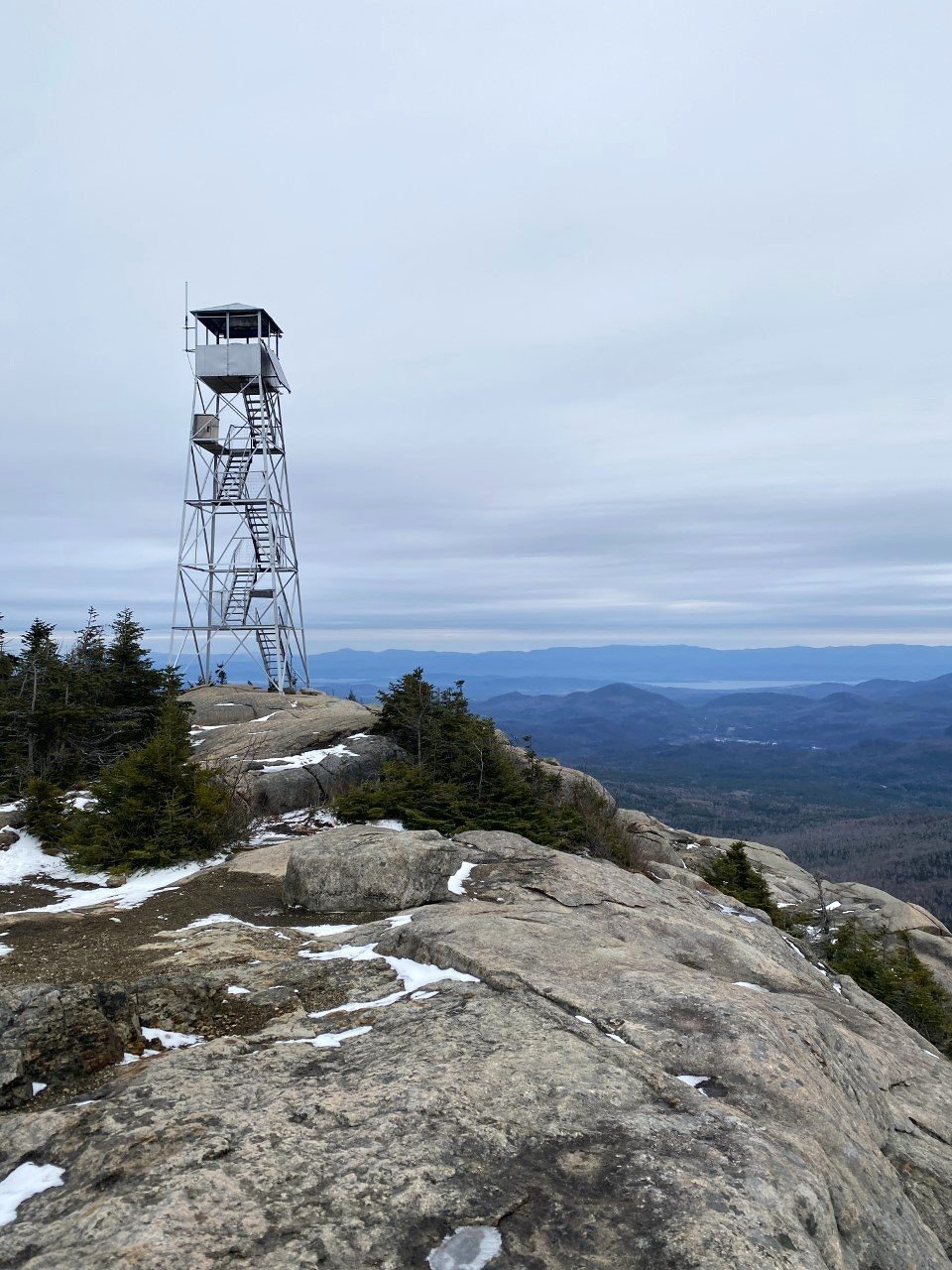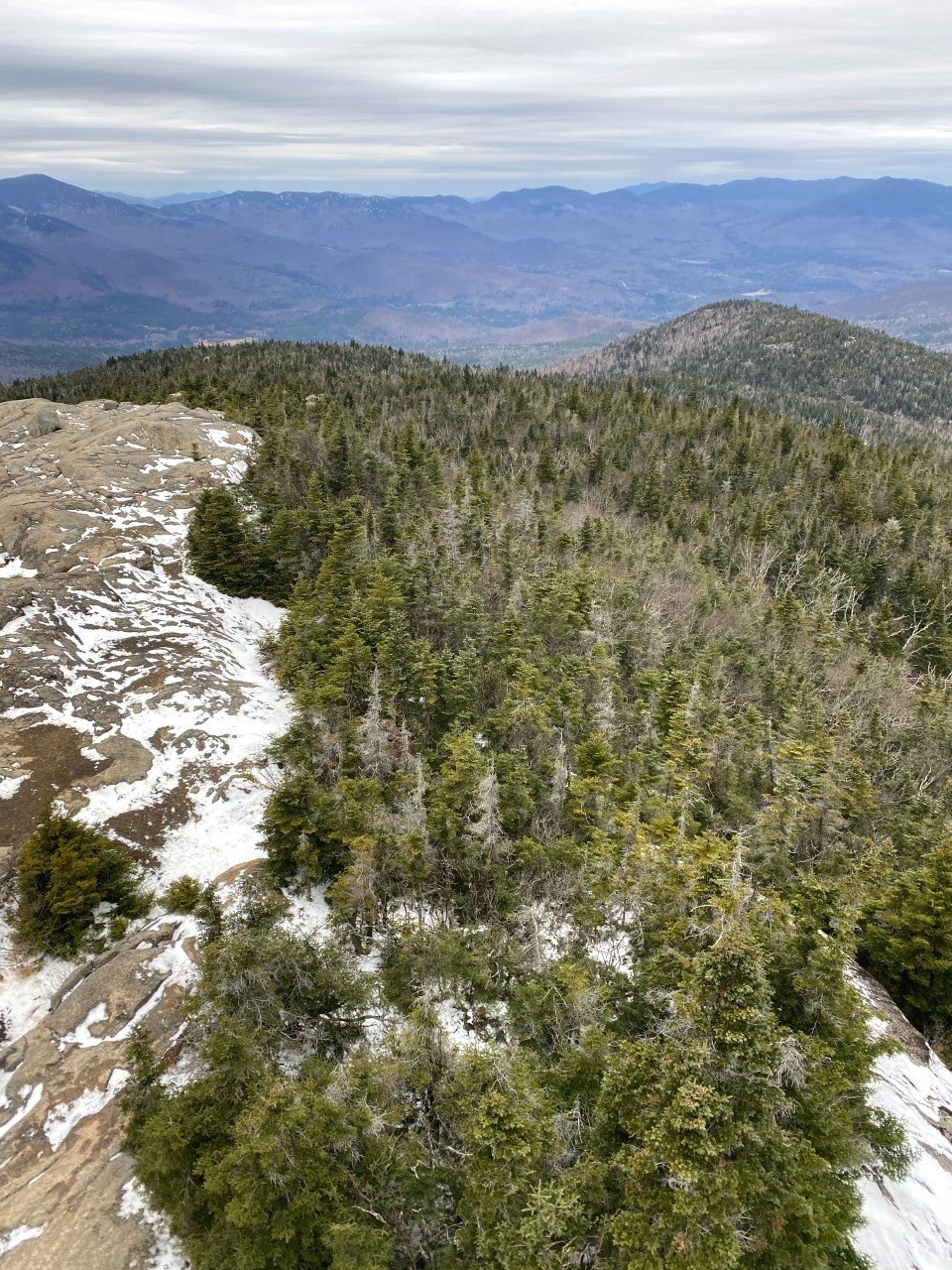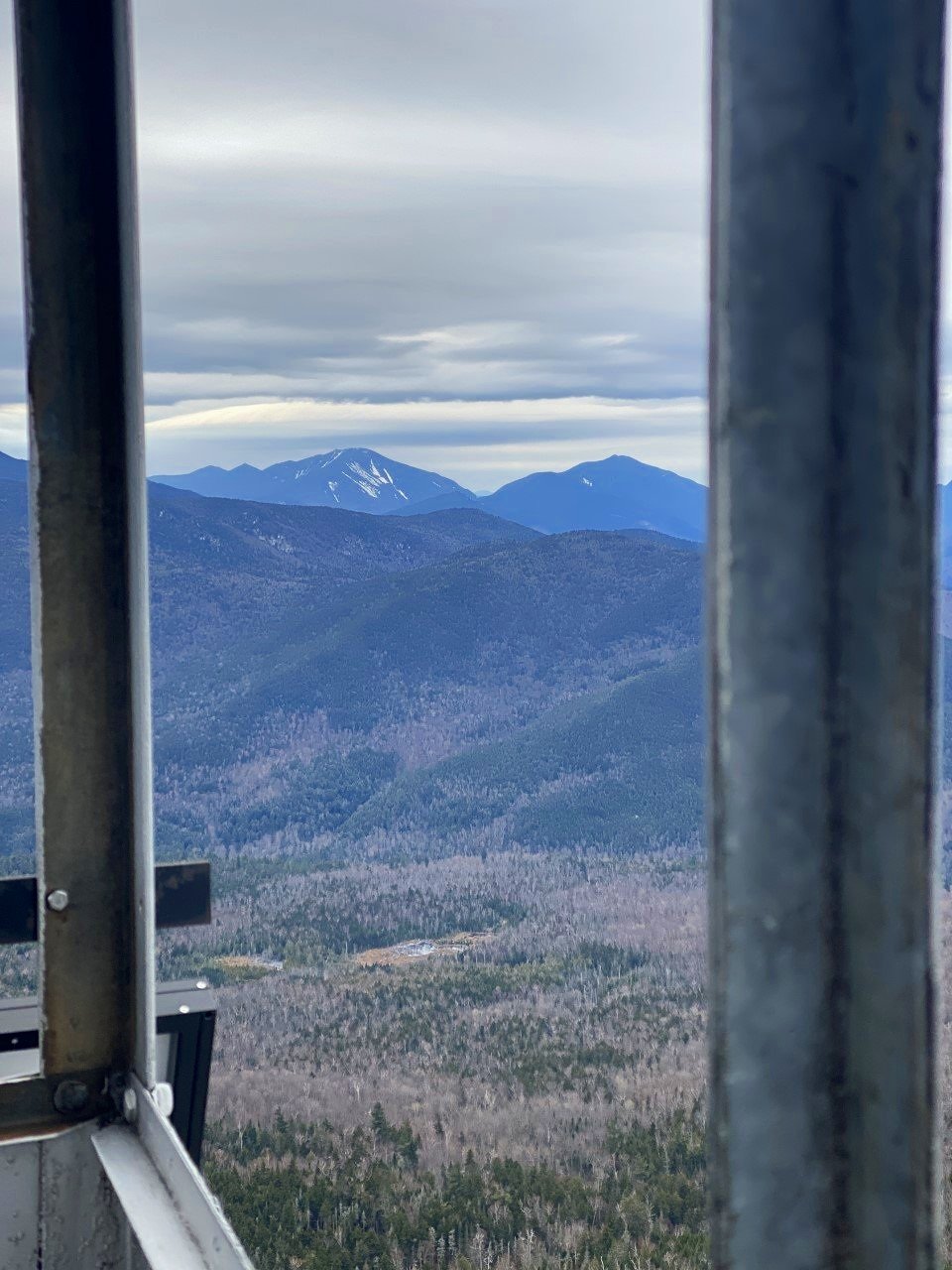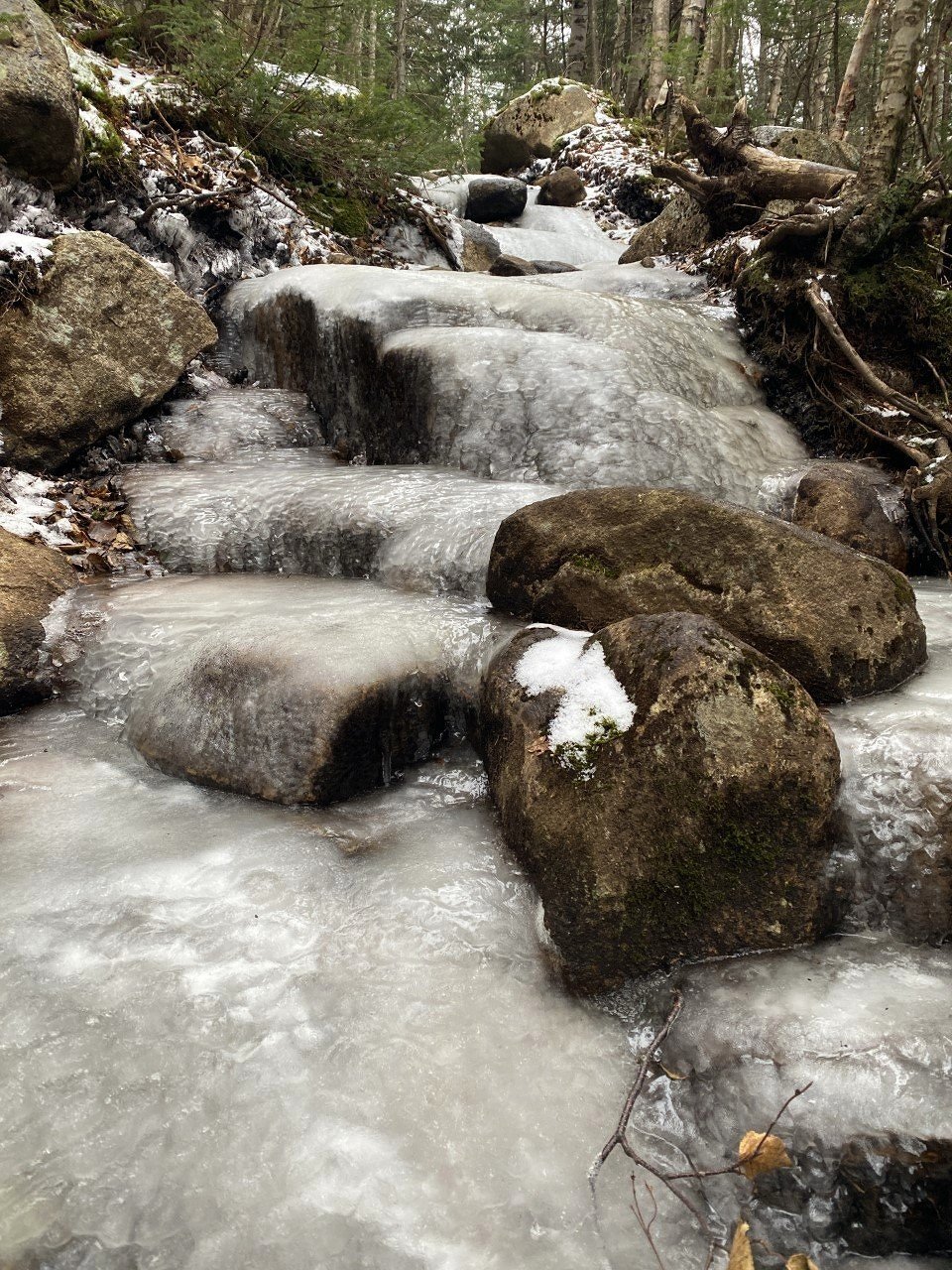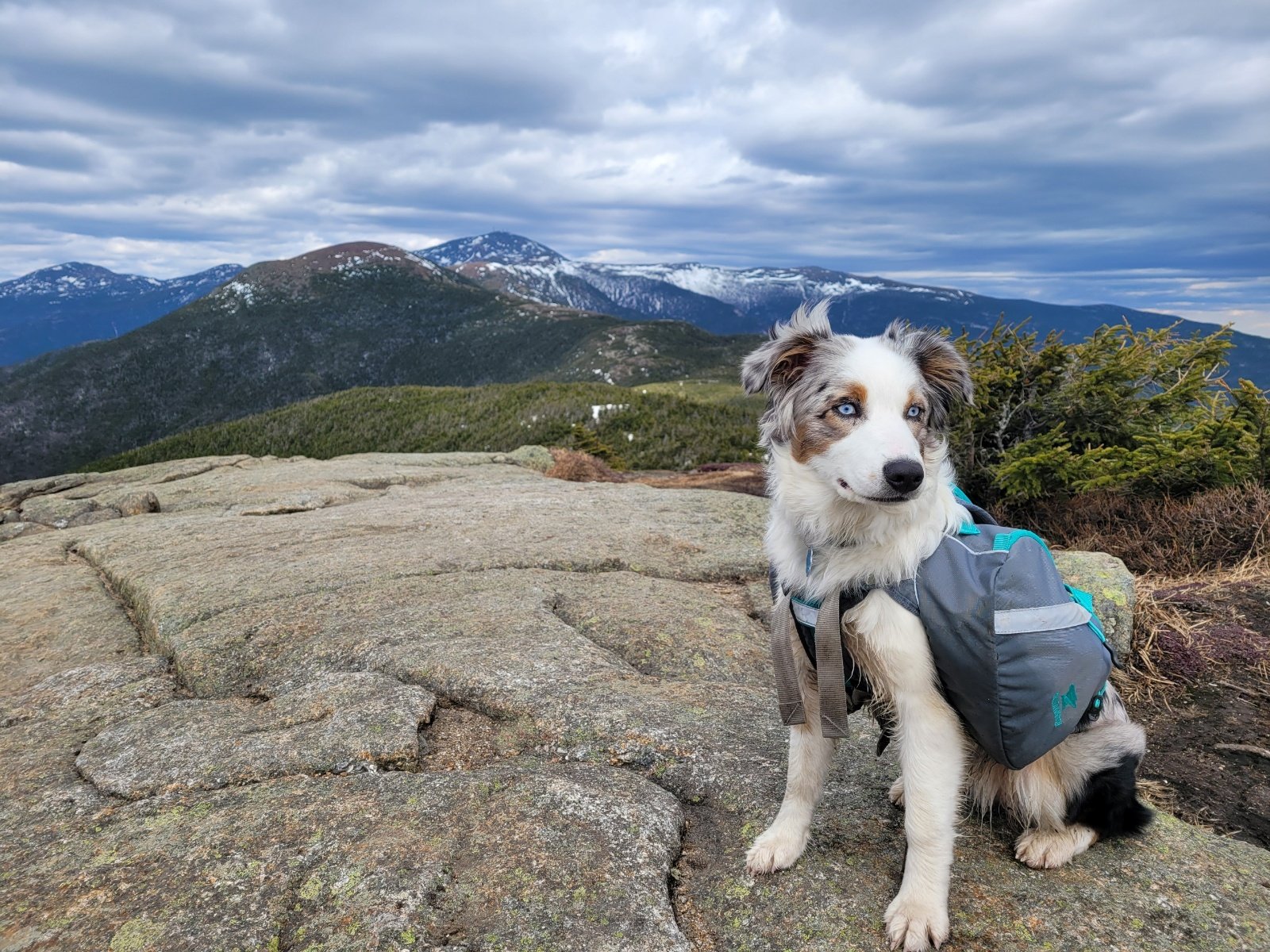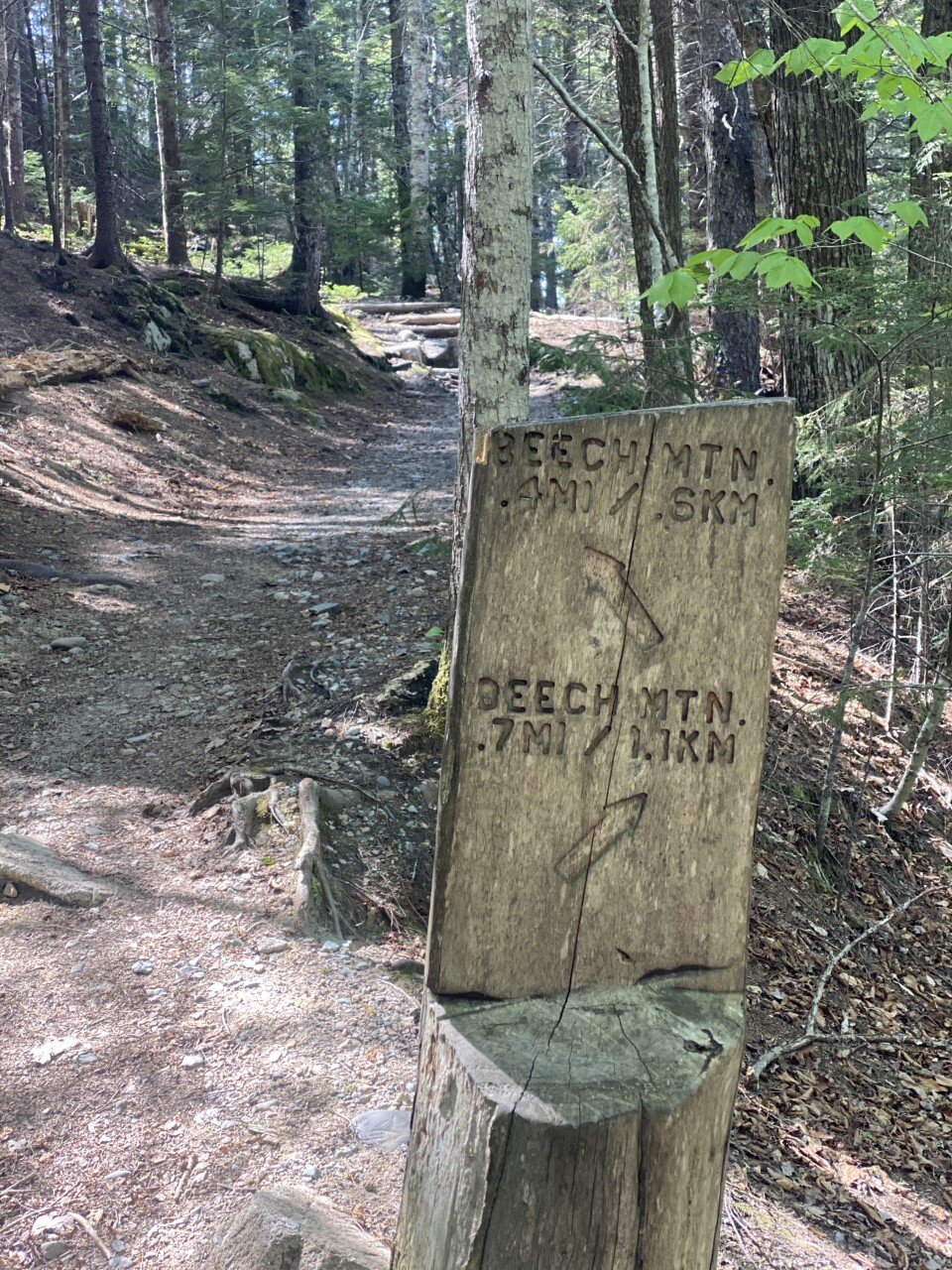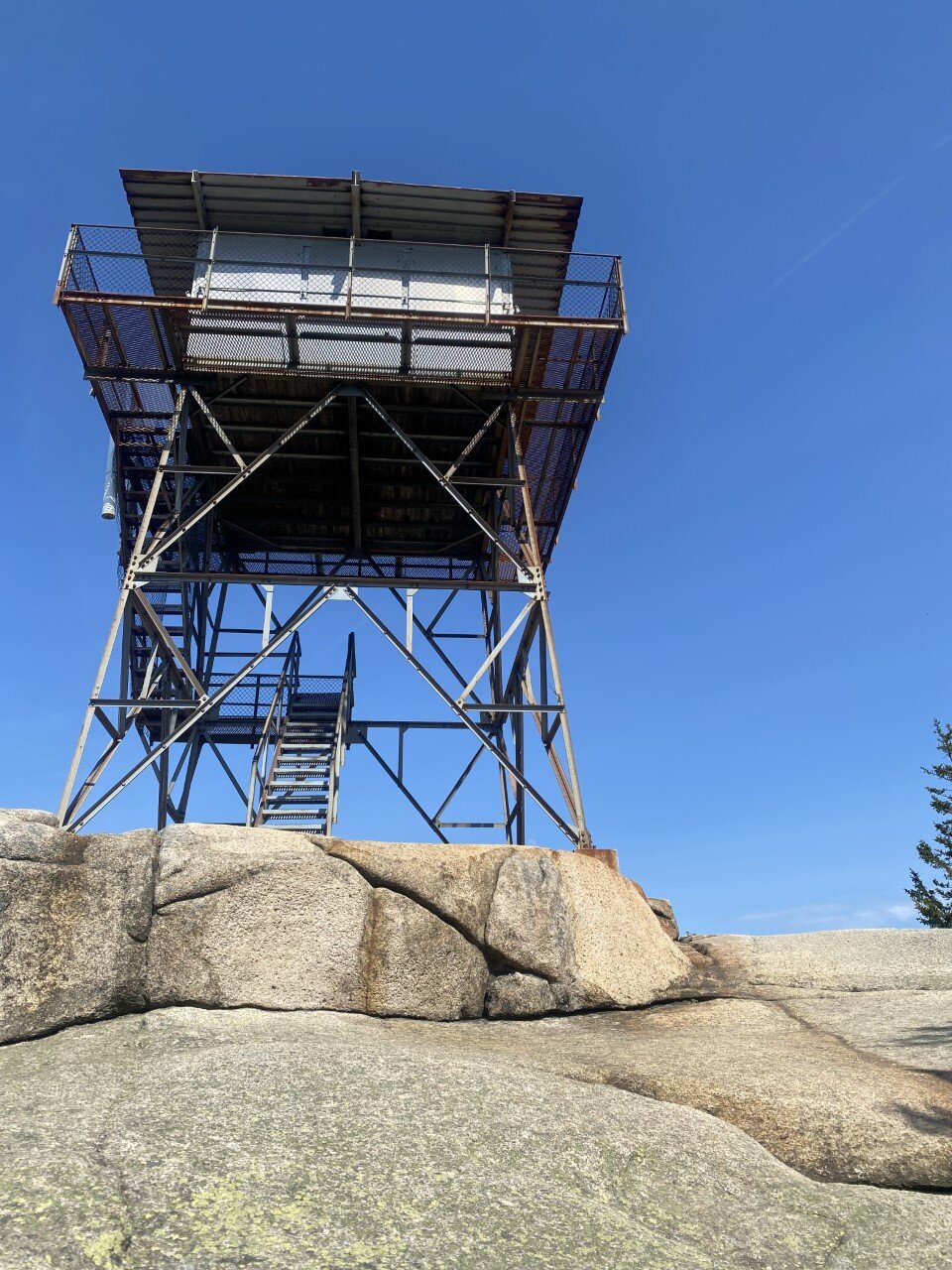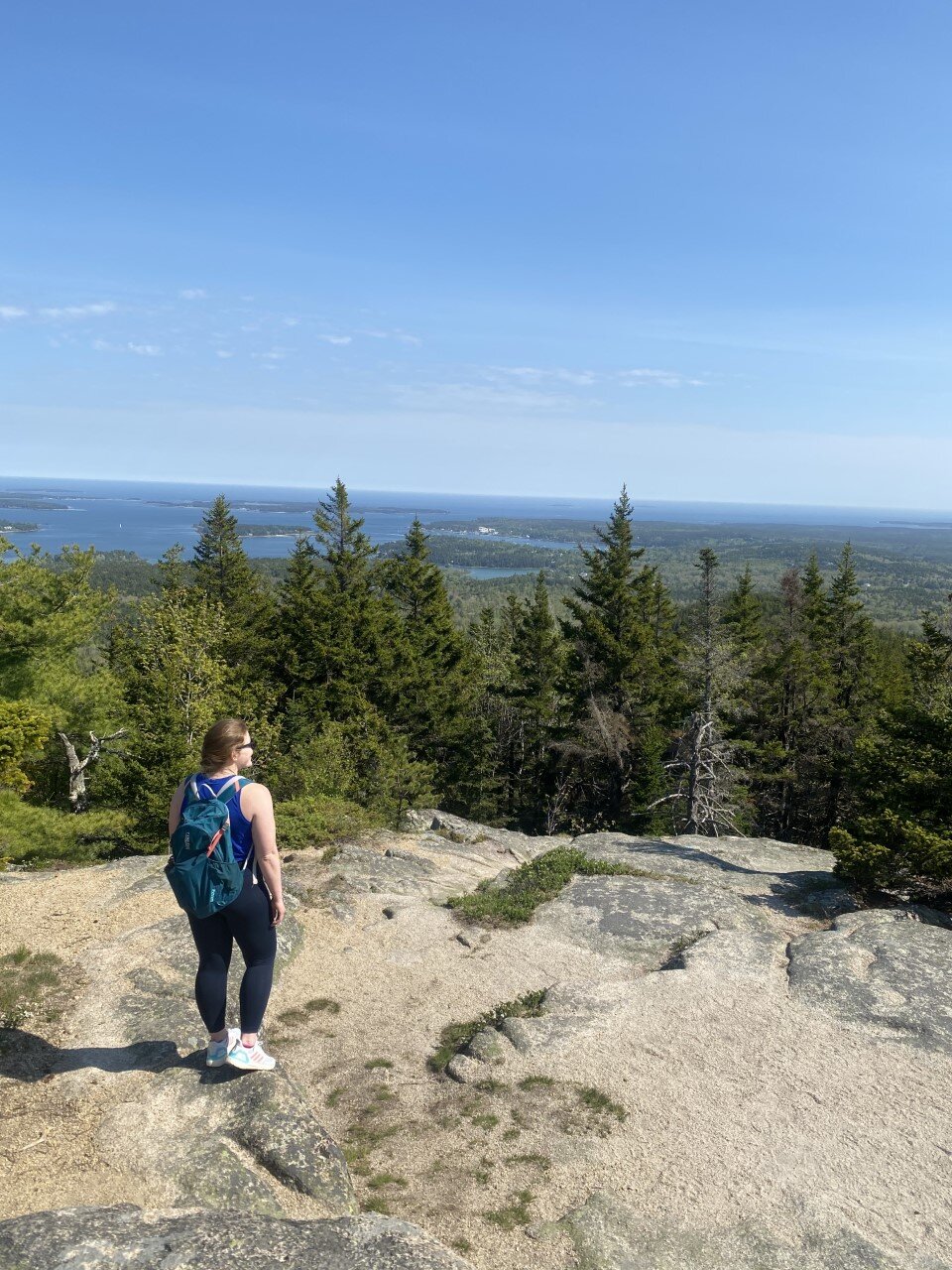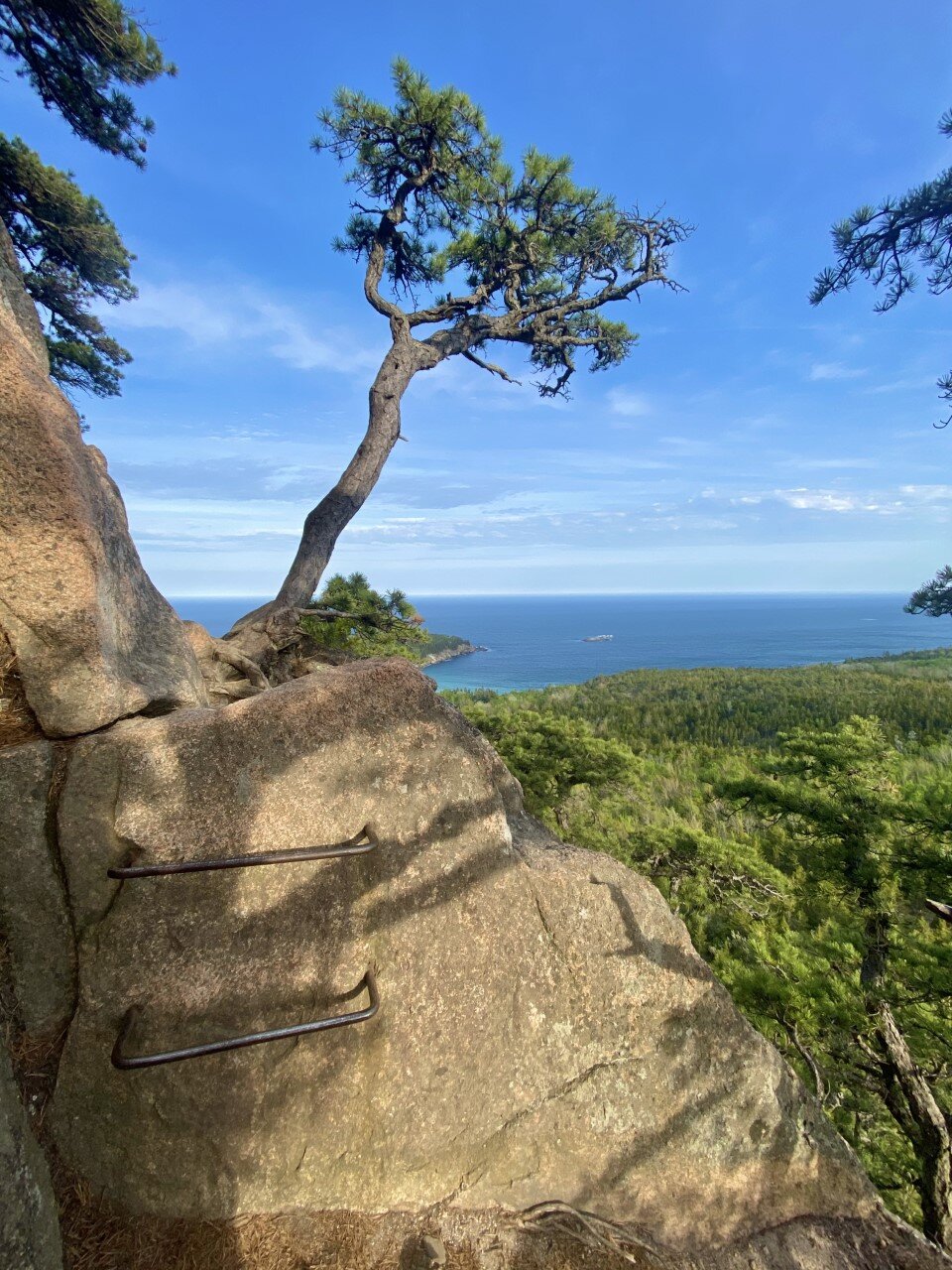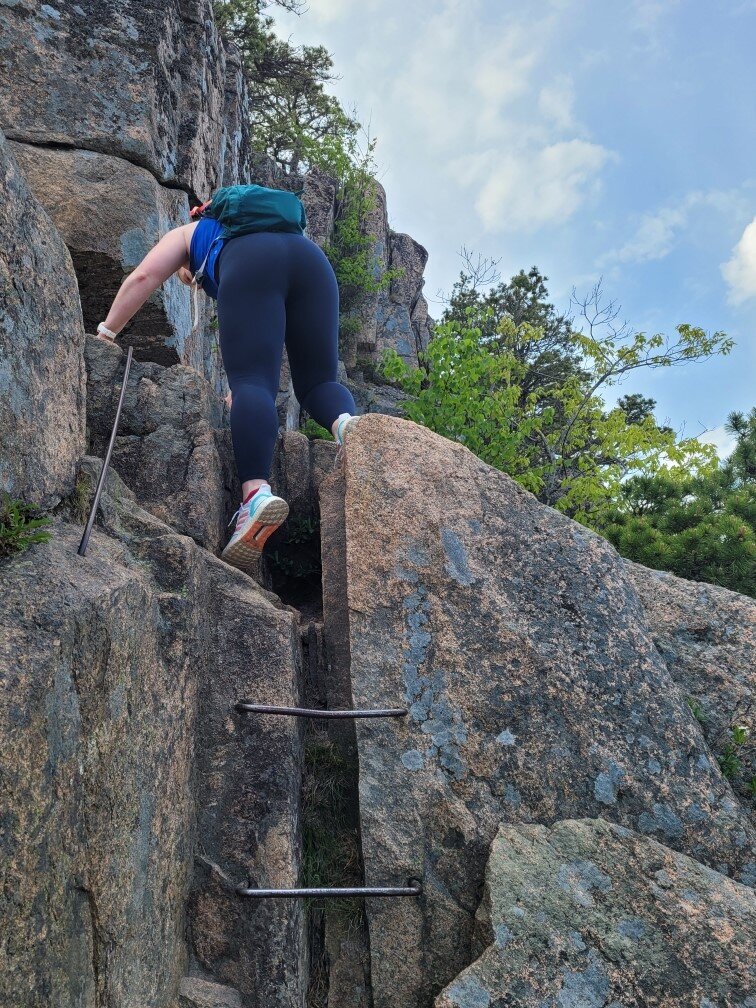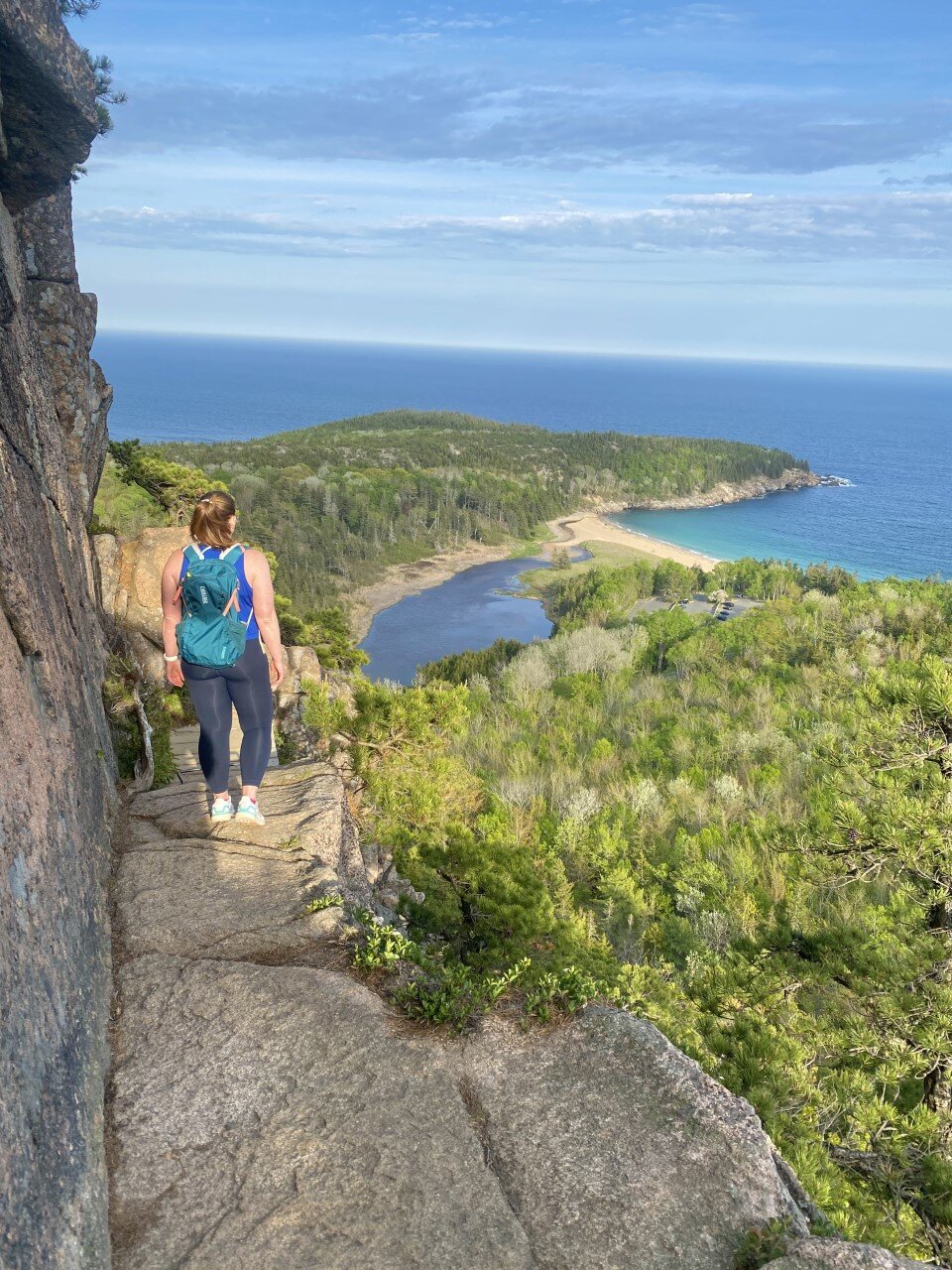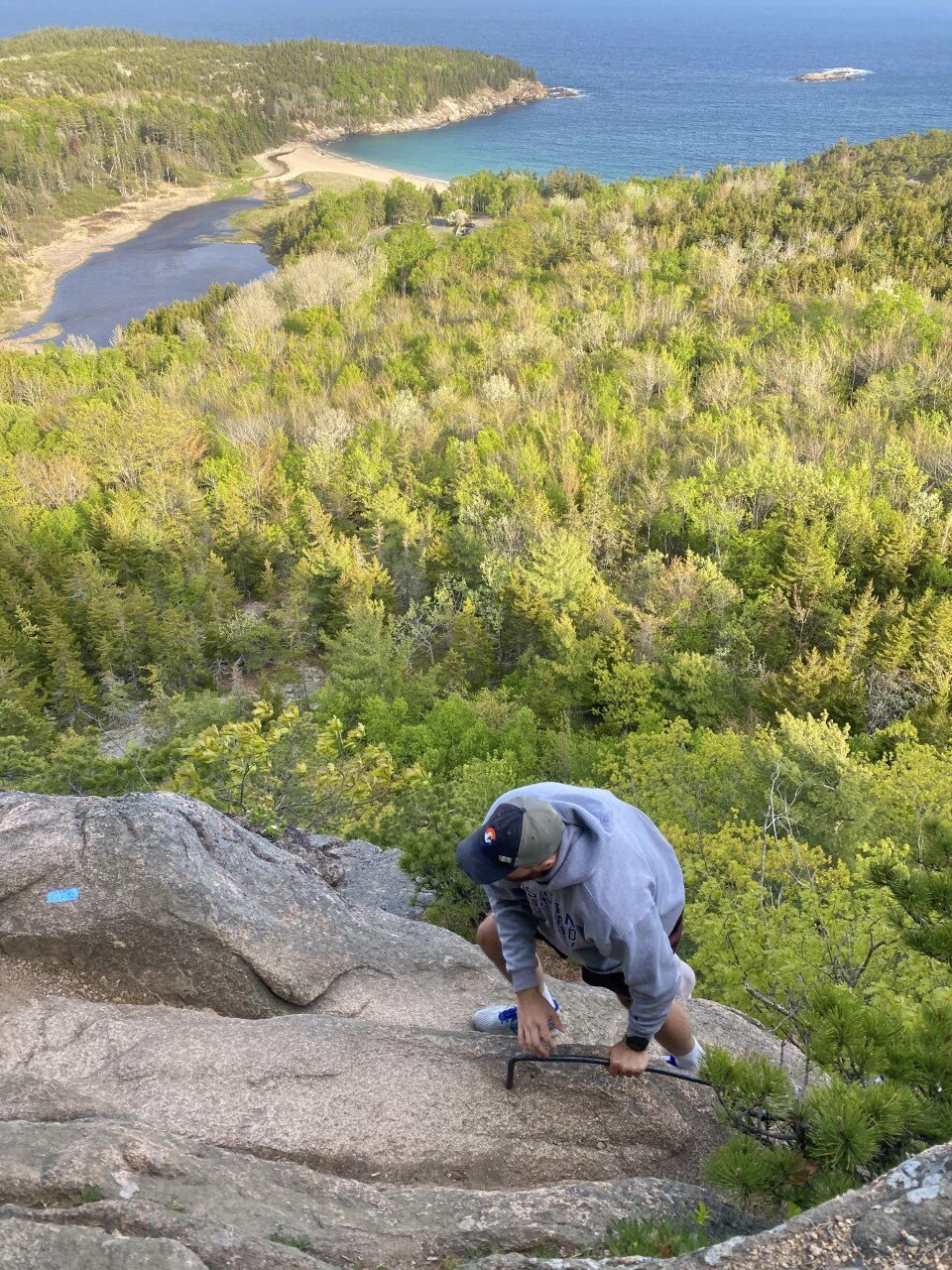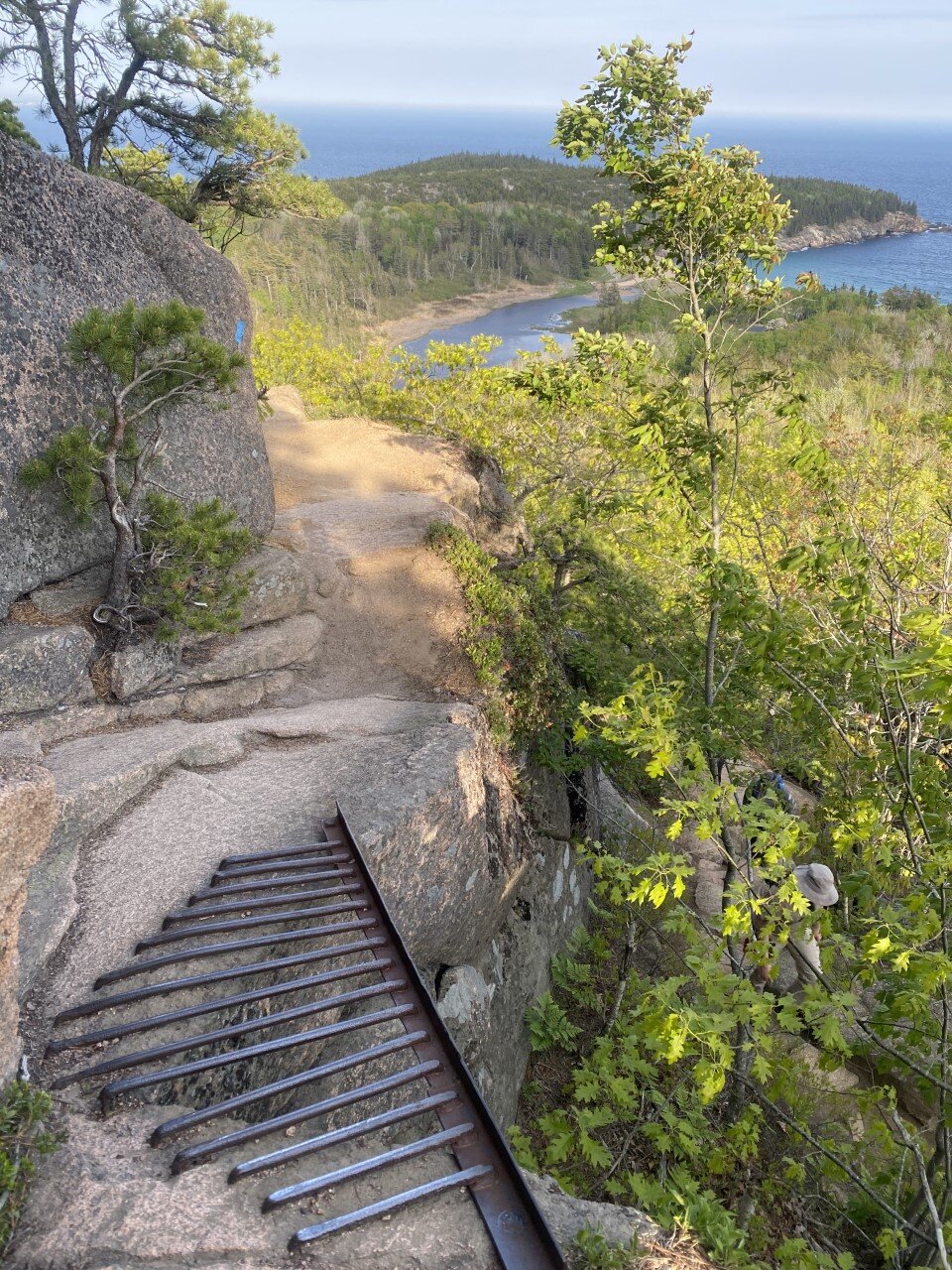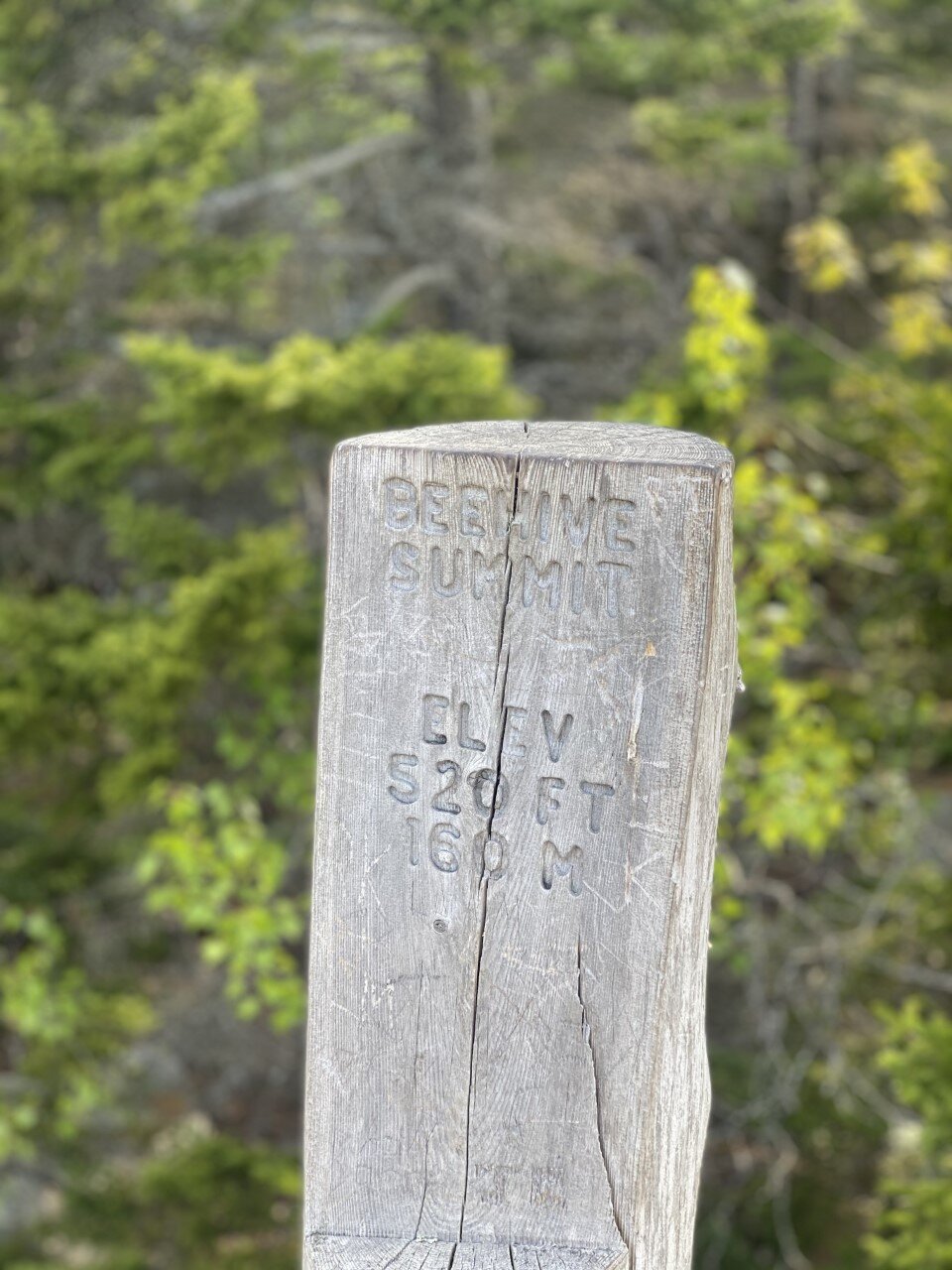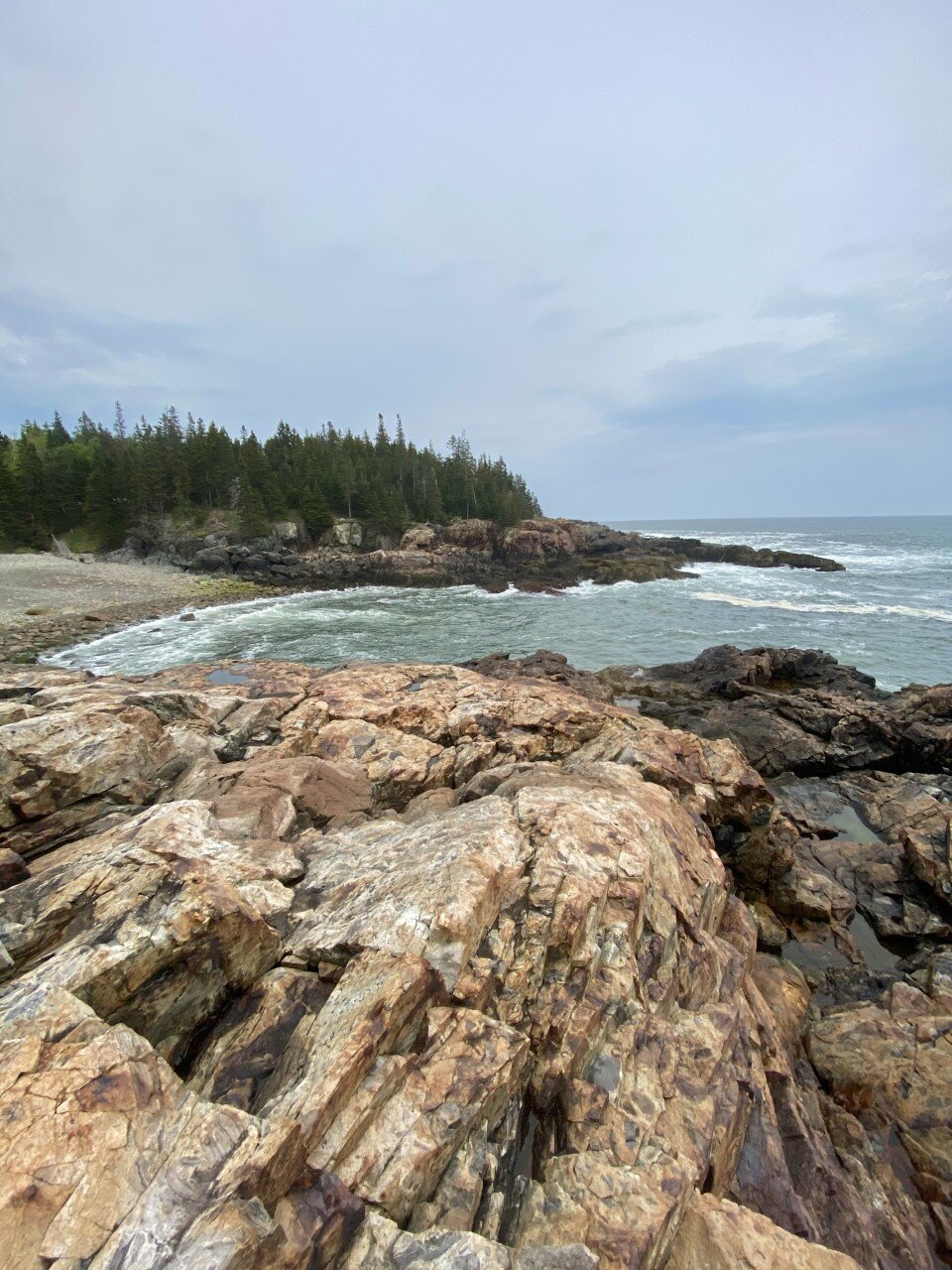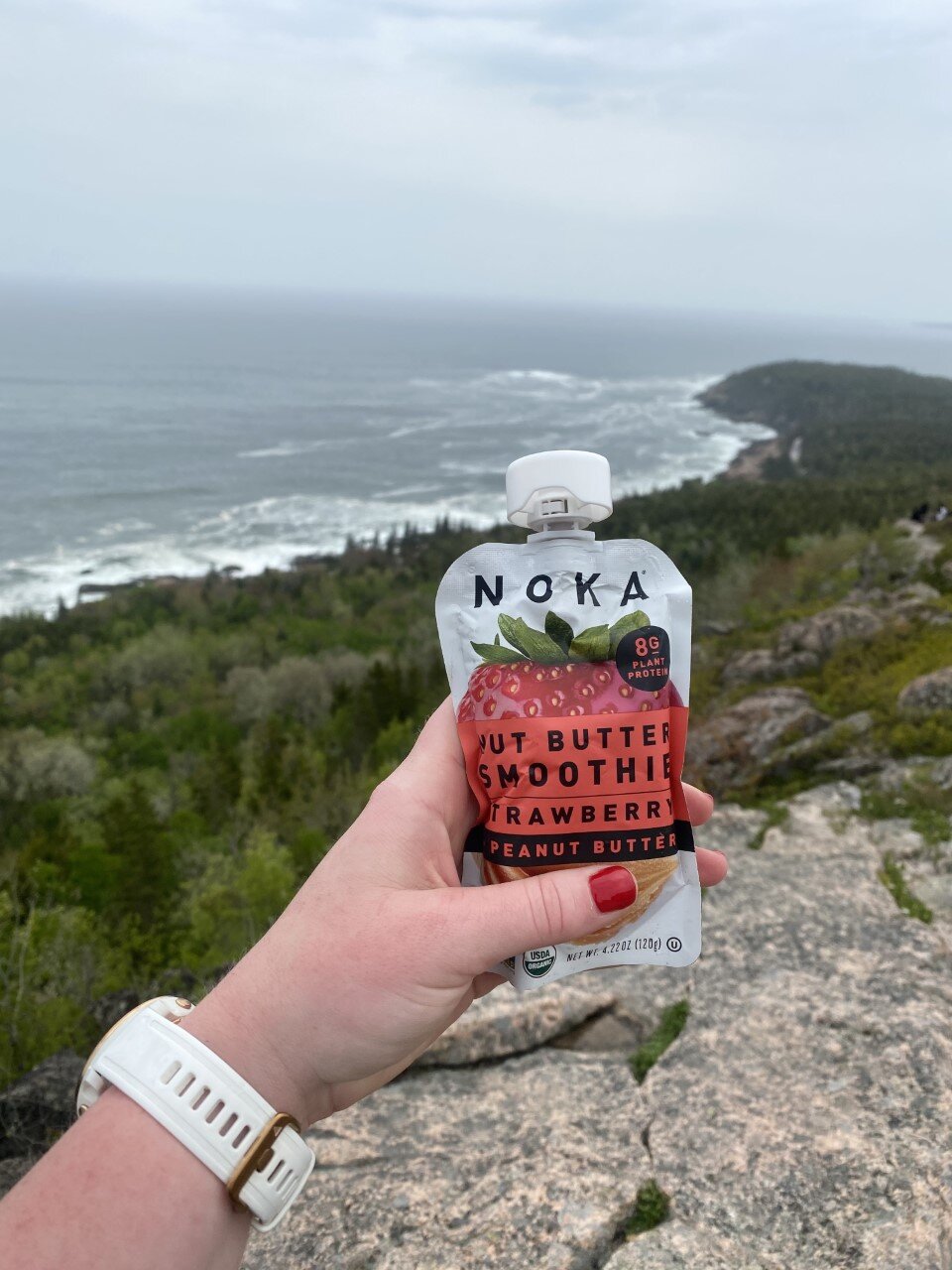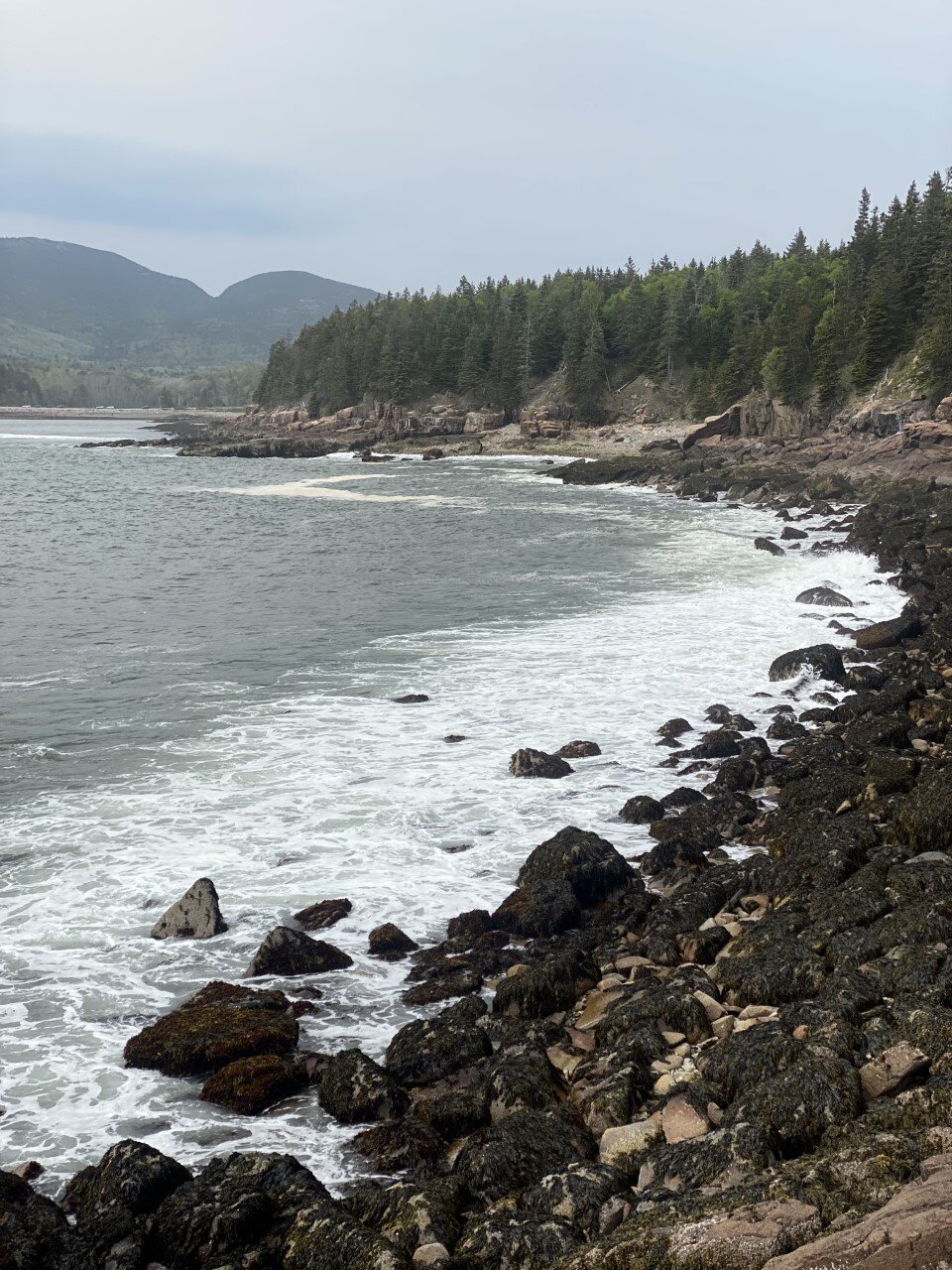Thru-Hike the Northville-Placid Trail in 9 Days (as a First-Time Backpacker)
I had never camped in the backcountry, nor had I thru-hiked. Yet, I found myself in Northville embarking on a 9-day, 138-mile thru-hike in the most remote part of the Adirondacks…
The start of the Northville-Placid Trail in Northville, NY.
In July 2022, summer felt like it was rapidly coming to an end. I set my eyes on either traveling to Isle Royale National Park in Michigan or backpacking for the first time.
To my surprise, almost all accommodations for Isle Royale were booked months in advance. I thought it was a difficult national park to access due to the only modes of transportation being an hours-long ferry ride or a small, costly seaplane. Apparently a remote island with no roads in Michigan is a highly sought-after vacation destination!
Disappointed that I wouldn’t be kayaking along Isle Royale, I pondered where else to venture to. My gaze lifted from my computer screen to where my wall calendar was.
July’s image was a summery scene in the Adirondack wilderness. It took seven months of this calendar year for me to realize the map illustration next to the days of the month. The illustration followed lakes foreign to me in an area I felt so at home in. I discovered this seemingly endless web of rivers and wooded forests was the Northville-Placid Trail.
I looked the trail up. The Northville-Placid Trail began construction in 1922 and was completed two years later. It is one of the oldest hiking trails in the United States taking hikers along a 138-mile point-to-point trail from Northville, NY, and ending, of course, in the town of Lake Placid.
This would be amazing, I thought to myself. Naturally, I pitched it to my best friend despite knowing she’d say no. It’s an eight-to-fourteen day thru-hike in some of the most remote corners of the Adirondack mountains. We day hiked 4,000 footers a handful of times, but we’d never done anything like this.
The surprises that summer continued. “Let’s do it” was her answer. It didn’t take her (and myself) long to realize we had no idea what we were in for.
About two weeks after we decided to try backpacking out for the first time, we found ourselves waking up before sunrise in our cabin in Lake Placid to pack our bear cannisters and our packs before our ride in the morning. Yes, we were packing for our trip the morning of. Again, total amateurs.
We had an honest-to-God Cheryl Strayed moment attempting to put our packs on for the first time to get them into the trunk. We were successful (and a little scared at how heavy they were) and met our incredible driver at the Lake Placid Historical Society’s History Museum parking lot.
Bob’s cheerful smile alleviated the stress built up from the backpack fiasco. He talked to us about fishing in Alaska, stopped for us to grab coffee, and told us stories of every town we passed through on our way to Northville.
Bob runs Bob’s Shuttles out of Piseco, New York. I found him through the Northville Placid Trail Facebook group a week before. He gave us tips for the trail and even stores hikers’ re-supply boxes in his garage. I couldn’t imagine having to carry 8-14 days’ worth of food. He’s a true gem.
Update: Though he stopped his services in summer 2024, he was a pivotal part of our NPT thru-hike. There are other driving services advertised in the Facebook group.
He dropped us off at the starting point in town, took our photo where we look incredibly vibrant and naïve, and said he’d see us in a few days in Piseco. Fingers crossed.
Here’s a breakdown of my nine days thru-hiking the Northville-Placid Trail:
Day 1: Northville to Woods Lake (13 mi, 2,300 ft gain)
The beginning of the hike is anti-climatic. We hiked three miles in the blazing sun during one of the most humid days along an asphalt road. Cars honked and people waved to cheer us on. At the end of the three-mile trek, we met a woman who told us of a bear sighting in the woods we were entering. Shortly after, a firefighter told us the same thing. Truly a lovely start for two girls who had never slept in the backcountry before.
We welcomed the tree-covered trails once we got there, and after about a mile, we took a lunch break. We regretted only grabbing coffee for breakfast when Bob stopped for us, and begrudgingly ate lunch early. A tortilla, two buffalo flavored chicken packets, and a little Nutella after sweetened the deal.
Pro-tip (from a beginner backpacker): figure out high caloric food because that lunch will get squashed rapidly down your throat on a hot, humid day carrying thirty-pound packs.
West Stony Creek Crossing
The West Stony Creek crossing, the water crossing I was nervous about getting through, was low, and easy to traverse. However, after heavy rains, we heard it could be impassable.
We made our way to Woods Lake, where our driver Bob told us to not camp at because it can get rowdy. The gorgeous Woods Lake is easily accessible by cars and only a .1 mile walk –making it an easy spot to access for the lake views. As we approached sunset, we decided to stay despite Bob’s warning. We took a dip in the lake we had all to ourselves, and I experienced the most magical sunset.
We woke up abruptly in the middle of the night to a couple locals having a good time. They went out on the water blaring music in a boat and returned the boat right next to our tent. Should have listened to Bob.
Day 2: Woods Lake to Canary Pond (14.6 mi, 2,000 ft gain)
After disrupted sleep at Woods Lake, we slept in and ate our oatmeal gazing at the gorgeous lake in front of us. We passed a few tiny bodies of water (Rock Lake, Meco Lake, and Silver Lake) before reaching our destination.
I was thrilled to have our campsite to ourselves with no easy access for cars to drive up to. We were beyond sweaty from another grueling heat wave day, so a dip in a pond was starting to feel like an NPT routine we could get behind.
Little did I realize that something in the water kept leeching onto me and turns out, it was actually a leech! We swiftly jumped out and decided maybe it wouldn’t become a daily ritual on trail.
Day 3: Canary Pond to Piseco (14.5 mi, 1,600 ft gain)
Our saving grace was knowing we would reach Bob on day 3. We had absolutely no service and were hopeful getting into a town would help. We also had a package that Bob kindly let us keep in his garage of our meal refuels and other items. Piseco was the point where my friend was contemplating leaving trail. I enticed her with a hotel stay and when we reached Bob’s Garage, we booked a night at The Inn at Piseco Lake. They offer a thru-hiker’s discount, but even without it it’s worth it. We left behind some oatmeal packs at Bob’s for the next thru-hikers, as we were extremely over it two days in. A nice shower without worrying about leeches was refreshing.
Day 4: Piseco to West Canada Lakes (16 mi, 2,500 ft gain)
Out with Oatmeal… In with Mashed Potatoes
We exchanged oatmeal for mashed potatoes, and used the inn’s microwave to cook this fine dining breakfast of champions.
With renewed spirits (mostly thanks to the shower and an absorbent towel), we embarked toward the part of trail I was most excited for: the West Canada Lakes. We had some turkeys trotting aggressively around us as we started the day, but we avoided the beatdown as soon as we entered the woods. At this point, my feet were blistered and legs bug bitten. My friend convinced me to hike in socks and Crocs… and I finally agreed. It completely down poured our last two miles, but we slogged our way to West Lake Lean-To #2, only to discover a group of college kids embarking on an orientation camping trip. I remember thinking that I wished I had one of those back in college! My other wish was simultaneously that they weren’t there so we wouldn’t have to set up our tent in the rain a little ways away.
Day 5: West Canada Lakes to Cedar River (16.4 mi, 1500 ft gain)
We awoke to dampness, a norm on the NPT in early August. Canada Lakes were rainy, so we didn’t linger too long in the morning. All of our clothes were still soaked, and it was tough to sleep because despite elevating my feet, they wouldn’t stop tingling. I created my own pillow by wrapping my rain jacket around my Ziploc bag of “clean” clothes. Clean is relative on trail.
This morning was rough if the trail images above didn’t give that away. My socks and boots were wet with my first step. The trail’s swamps joined together with last night’s rain to create a large lake. The slog was only two miles, but lasted two hours.
Wakely Dam Camping
As we entered Wakely Dam, we passed by a few campers. To our surprise, a bit of trail magic appeared. A camper saw our packs (and probably our faces) and offered ice cold Pepsi cans. I don’t even like Pepsi, but in that moment, it tasted like pure sunshine. Turns out they were from Northville, NY, so they were delighted to hear we had hiked from their home to this spot.
We washed our dirty clothes in the Cedar River Flow, but with the humidity, they did not dry overnight. Clean, damp clothes may almost be worse than dirty and dry ones.
Day 6: Cedar River to Lake Durant (12.2 mi, 1300 ft gain)
A shorter mileage day in terms of distance, but not feeling. It was wonderful to get into the Lake Durant campground, book a campsite, and set up camp with plenty of daylight left though. I walked down to the lake for a short dip. We finally caught up on journaling and showered in the campground showers. We laid inside our tent for hours before we succumbed to sleep.
I usually sleep well in the woods, but with wet socks all day, my feet were blistered beyond repair. My camp sandals (chacos) only made worse. One of the top priorities in town the next day was to find a pair of Crocs if I hoped to continue the trail.
Day 7: Lake Durant to Long Lake (14.5 mi, 1800 ft gain)
We left Lake Durant with puffy eyes set on our next resupply in Long Lake. Bob wonderfully left our second resupply at the Adirondack Hotel in Long Lake. To keep spirits high (and to have company on this thru-hike), we booked a night at the hotel to recharge once we made it.
This was the second rainy day on trail and we would reach the highest point of the entire trail just past Tirrell Pond at 3,008 ft in the Blue Mountain Wild Forest. Rain fell consistently as we had the longest stretch of wooden planks, a quarter-mile, lined with wet ferns brushing up against both sides of our bodies. My feet were utterly drenched. Once we reached the parking lot, my shoes came off immediately.
Adirondack Hotel in Long Lake, NY
We barely reached service enough to call Jim, one of the sweet owners of the Adirondack Hotel, who gave us a ride into town. There’s very little a burger, beer, and a Stewart’s milkshake can’t fix. It was just the fuel we needed to explore four stores before finding a pair of Crocs in my size! My hopes of finishing the trail in the next three days were high. Whatever it is, the way you tell your story online can make all the difference.
The sunsets along the Northville-Placid Trail were unreal, and this view just steps from the Adirondack Hotel in Long Lake was no exception.
Day 8: Long Lake to Cold River (12.5 mi, 1300 ft gain)
It was tough leaving Long Lake for the trail. We ate at a diner before our ride back to the Northville-Placid Trail. With new crocs in tow, things were looking up. We knew we were roughly 2/3 done, but we still had a third to go. Southbound hikers informed us of plenty of blowdown in this last section to top it off.
We walked along Long Lake, stopping at Plumley Point for lunch. It felt like the best day on trail yet mostly due to weather and views. Long Lake truly goes on for a long time (so it felt) and the heat wave finally broke. If I was to hike the NPT again, I would spend an extra day soaking in the lake views.
We continued on with our sights set on one of the Cold River lean-tos. We would’ve loved Lean-To #3 because of its higher vantage point of Cold River, but a father-son duo celebrating their last hurrah before the son went off to college occupied it. Cold River Lean-To #4 was right along the water. Not a bad consolation prize. True to its name, it was our first chilly night on trail. On one of the last nights, I finally got to wear the leggings I had carried for eight days but hadn’t used. The father and son came by to let us know of a bear sighting, but sadly it never said hello to us.
Day 9: Cold River to Lake Placid (24.2 mi, 2,800 ft gain)
Sitting on the rocks taking in the morning cold, we sipped our coffee. So refreshing after so many sweaty days. Each morning we were packed up and on the trail earlier than the day before. Things were in a groove it felt like.
The smell of pine and sound of the Cold River filled the first few miles of the morning.
We passed through Shattuck Clearing, awed at views of the Seward range (that I was tempted to summit), and explored the Rondeau Hermitage site. We hit ten miles by noon and decided to keep going to our spot for the night.
There was a tricky spot to navigate here with a massive tree log serving as a bridge. I was impressed I managed to walk across with my pack with ease. We approached our lean-to for the night in the late afternoon. Moose Pond had a beautiful lean-to, but the pond wasn’t easily accessible. With 15.2 miles behind us for the day, and several hours of daylight to go, we thought we’d do what we hadn’t done yet: a twenty-mile day.
It didn’t feel like the final night at Moose Pond, so we decided to tackle on the additional nine miles to finish the trail a day early. It felt amazing to hit a twenty-four mile day for our finale, and even better to make it to Big Slide Brewery for their honey pepperoni pizza that might’ve been devoured in record time.
Mileage and elevation gain rounded up to the nearest tenth.
A few recommendations:
1. Purchase both the Northville-Placid Trail Map and the latest edition of the Northville-Placid Trail book. Both come in a pack for $30 from ADK.org.
2. Use Piseco and Long Lake as refueling stations if you need them, not Blue Mountain Lake. Blue Mountain Lake adds a handful of miles in one direction that you may not be up for. The post office there also could be closed depending on when you make it in.
3. Do not rely on phone signal. We had no service with T-Mobile or Verizon the first three days from Northville to Piseco for us. We only had service at The Inn at Piseco Lake when we connected to wi-fi.
4. The Northville-Placid Trail is extremely isolated. Over the span of nine days and 138 miles traversed, we only saw 1-2 groups (whether it was a solo hiker, a couple, or a college group closer to the end) daily. There is little room for error if you are injured or need assistance until you reach the town milestones: Piseco, Long Lake, Lake Placid. Plan accordingly.
The Northville-Placid Trail only furthered my love for the Adirondacks. I had only hiked a handful of the 46 at this point, but it instilled in me a desire to complete them all. The remoteness of this trail appealed to me, despite the challenges being very isolated in the woods can create.
Have you heard of this thru-hike? Would you do it?
If you enjoyed this post, check out other hiking adventures:
Four Reasons to Visit Nevada’s Greatest Gem (No, Not Vegas)
And that’s how I landed on visiting my 44th national park. What I did not plan for is loving northern Nevada as much as I did. Here are four big reasons why this small town…
Summit of Wheeler Peak, the highest mountain in Nevada’s Great Basin National Park, June 25, 2024.
When one of my close friends decided to get married in beautiful Breckenridge, I immediately knew I’d extend my trip. Flying to that part of the U.S. isn’t as easy as driving to the mountains in the Northeast, so I wanted to take full advantage of my time out west. After last summer’s excursion to Isle Royale National Park off the coast of Michigan and Virgin Islands National Park a few months prior, the more remote a park is, the more I seem to enjoy it.
I mapped out the closest new-to-me park from Denver and there was only one national park that was remotely in driving distance. To be fair, driving distance is relative, but to me, a ten-hour drive, partly along America’s loneliest highway, sounded like the perfect plan.
And that’s how I landed on visiting my 44th national park: Great Basin National Park in Baker, Nevada. What I did not plan for is loving northern Nevada as much as I did. Here are four big reasons this small town made its way to the top of my favorites list:
Stella Lake from the Stella Lake trail heading to Wheeler Peak.
Wow, does this park genuinely have it all! From the world’s oldest living organisms to the state’s (technically) highest peak and only glacier, Great Basin National Park should be on everyone’s list of places to explore.
Hike Wheeler Peak
Y’all know I love a good hike, and after hiking a couple 14ers in Colorado, I was ready to take on Nevada’s second highest peak. Nevada’s highest peak, Boundary Peak, is only about 70 feet higher and partially in another state, but one minute at Wheeler Peak’s summit will make you feel like you’re on top of the world.
At 13, 063 feet, this peak towers over Great Basin National Park. A little over 8 miles and 3,000 feet of climbing, this trail was very easy to follow. I brought microspikes and trekking poles, but did not need to use them.
Explore the Oldest Bristlecone Pines in the World
Bristlecone Pine Glacier Trail
Great Basin bristlecones are over 5,000 years old. There’s a short trail from the Wheeler Peak campground that takes you through an informational path of the bristlecone pines. Definitely worth a detour if you’re already at the campground.
Dip Your Toes in an Alpine Lake
There are a handful of alpine lakes in Great Basin National Park. The most popular ones are found along the Alpine Lakes Loop leaving from the Wheeler Peak campground. I took the Stella Lake trail up Wheeler Peak, so I had the joy of staring at Stella Lake for awhile as I made my way to the summit. Once atop Wheeler Peak, I had a birds-eye-view of three alpine lakes. Three! I felt great getting off the mountain, so I added in the Alpine Lakes Loop and my feet were glad I did. Stella Lake is the largest of the three, but my favorite was Teresa Lake. Turquoise blue waters, a view of Wheeler Peak, I couldn’t ask for a better ending to the day’s hike. I woke up early the next morning for another dip and had the lake all to myself for a couple hours.
Gaze at Nevada’s Only Glacier (while it’s still there!)
If you’re on the Bristlecone Pines Trail, you can continue hiking for a little under a mile to see Nevada’s last remaining glacier. I know this park is remote, but I am truly shocked it’s one of the least visited. There is so much history packed into this park that everyone can find something to take away from a trip here.
Tips: Great Basin National Park is at a higher altitude than most visitors live at. Remember to hydrate, pack ibuprofen, and take it easy as you adjust. If you’re sensitive to the sun, higher altitudes bring you closer to the sun, so pack the sunscreen!
Best time of year to visit: There’s something to see in every season, but if you’re outdoorsy, winter conditions close the main (and only) road, Wheeler Peak Scenic Road, into Great Basin National Park. I visited in mid-June when snow had mostly melted. It’s not uncommon for snow to be present until the end of June depending on how heavy winter was that year.
Cost: Great Basin National Park is currently free of charge to explore.
Where to stay: The park offers campgrounds, but I highly recommend Stargazer Inn.
2. Stargazer Inn and Bristlecone General Store
Baker is a small town with a big heart, largely thanks to the owners of the Stargazer Inn. As I’m getting older, I find I gravitate toward a small town feel (if that was not evident by my desire to find the most remote parks and explore them). I have visited plenty of America’s biggest cities, and nothing attracts me more than a small town where locals are welcoming, the food is delicious, and the views are endless.
This trip I chose not to camp to minimize my packing list, so I was looking into stays around each of my destinations. I came across Stargazer Inn, a quaint inn right in the heart of Baker, Nevada mere minutes from Great Basin National Park. I gave Liz a call and sure enough she had a room for me to stay. What she also had, was a connection to Western Mass since she and her husband actually lived here for several years. This little pocket of Nevada is over 2,500 miles from me and yet it still felt like home— thanks to Liz.
Liz and James are the owners of Stargazer Inn and they also host monthly events that cultivate a community in Baker with meet-ups for book clubs, full moon hikes, and more!
I love camping, but my room at the Stargazer Inn put my mind at ease as a solo female traveler, kept my packing list minimal thanks to so many amenities (laundry room, small kitchenette with a fridge, microwave, and coffee!), and saved on travel time to the park. The Stargazer Inn has 10 rooms to stay in, and also offers RV and van hook-up sites.
Address: 115 S. Baker Ave. Baker, NV 89311
Contact: Email Liz at stay@stargazernevada.com or give her a call at 775-234-7323.
Tips: The Stargazer Inn also features a general store, the Bristlecone General Store for any supplies you might run low or run out of. Or maybe if you underestimate the Sierras sunshine like I did, there’s plenty of aloe vera to purchase there.
3. Female-Owned Food Businesses
With most of my trips incorporating long hikes, part of my trip always includes finding food gems. And in a town with only one street and a population that’s smaller than my 7th grade first period class, I was hesitant about where I’d find a post-hike meal. I stocked up on food prior to arriving, but was surprised by the two finds I came across:
Sugar, Salt, and Malt Restaurant (70 Baker Ave. Baker, NV 89311)
After my hike up Wheeler Peak, I was ready to eat. I walked into Sugar, Salt, and Malt and when I saw the white sauce pizza on the menu, I was sold.
This pizza included chicken Italian sausage, roasted garlic, ricotta cheese atop artichoke heart and spinach cream sauce with a balsamic reduction. In what feels like the middle of nowhere Nevada, this was quite the sight. It gets better. One of the owners is a trained pastry chef and creates homemade ice cream cookie sandwiches. Naturally I had to try it. There’s the classic chocolate chip cookie with vanilla ice cream, and then there’s the chocolate cookie with strawberry ice cream. This spot was so nice I had to visit twice!
Sandra’s Mexican Food Truck (45 Pioche St. Baker, NV 89311)
My last day in Baker, I contemplated a third visit to Sugar, Salt, and Malt, but they are closed on Wednesdays. In such a small town, there are not a plethora of options, but the ones that are there are delicious. I made my way to try Sandra’s Mexican Food, and yet again, my heart and stomach were full. Sandra cooks delicious burritos, tacos, tacos – you name it. She operates out of a food truck and has churros. Need I say more?
Sandra’s portions are very hearty, I wish I spent more time in Baker to eat there again.
Tips: Check hours prior to planning a visit. For example, Sugar, Salt, and Malt are closed Wednesdays and Thursdays. Additionally, be mindful that with Baker being a very remote town, ingredients and shipments are not as easily accessible, or affordable. Prices at both establishments above are very reasonably priced given the quality of the food and the distance supplies need to travel.
4. The Charming Creativity of Baker, Nevada
Driving through Baker (the whole two-minute drive on its only street) immediately reminded me of my drive through Marfa, Texas. Marfa, before its widespread fame as a minimalist art stop, felt like a middle-of-nowhere art museum. From a tiny Target store to a Prada store (with merchandise inside), Marfa’s exhibits were a stop on my road trip out to Big Bend National Park back in 2016.
While it feels like the middle of nowhere northern Nevada, Baker embraces that. Baker is “where all roads lead” and I loved seeing that on a colorful sign. Another quirky spot is across from Sandra’s Mexican Food. A rundown wooden shack that genuinely looks like it has been around since pioneering days would not catch the attention of most people, but with the Sierra Nevada mountain range as a backdrop, I gave it another glance. There’s a small white plaque on the structure that made me laugh:
Museum of the Future
Coming Soon
Marfa’s increasing tourism has made its way onto many people’s West Texas bucket lists, but Baker feels like how Marfa felt years ago — charming and quirky and undiscovered.
Have you heard of Great Basin National Park? Would you add northern Nevada to your bucket list?
The Best Local Hike in Western Massachusetts
Everything you need to know about the best local gem hike in Western Mass…
Tekoa’s rocky ledge viewpoint is Western Massachusetts’ best-kept secret. Read on to find out how to get here.
One of the top reasons on my list for wanting to move to Western Massachusetts was for the outdoor adventuring. Growing up in a suburb of Dallas, hiking looked like going to local park and exploring the woods. It was a great way to pass a Saturday afternoon (and who can complain about time spent outdoors/), but I craved more. I wanted longer trails. Elevation gain. Summit views.
Western Mass has this hidden beauty that only those who visit will ever uncover. Most people who visit Massachusetts frequent Boston or the Cape. There’s a running joke up here that Worcester is Western Massachusetts to Bostonians. Very few take the scenic drive out to what I consider to be the real gem of the state.
I may be biased, but Western Mass has it all—from outdoorsy adventures to breweries, to easy access to day trips. In the six years I have resided here, I frequent many of the same trails. In the last year, however, I discovered countless new ones. My all-time favorite? Tekoa Mountain. And here’s why.
Tekoa is something special.
It’s not easily accessible. It’s not a walk in the woods like many Western Mass favorites. It’s immersed in nature. Untouched, it feels like. Overgrown at times. Rarely do I see other hikers on this mountain despite its beauty.
I first stumbled upon it on a solo drive to upstate New York. Everyone driving to that area of New York on the Mass Pike crosses over a bridge that showcases encompassing valley views. Yes, that bridge you see way down there in the images above.
If you’re able to glance long enough, you notice a rocky ledge on the upper righthand side. After I caught sight of it for the first time, I made a mental note of the town I was driving through (Russell, MA), and researched it as soon as I could. Want to know what I found?
Nothing.
No trail maps, no trail reviews—nothing on AllTrails, and that says something.
I found a few comments about a steep route up that involved a sketchy parking situation that I was not keen on venturing into. I put off the search for a couple years and decided to try again last fall. I lucked out after some digging and found a legal parking spot. With a little trial, some error, and a sprinkle of wrong turns, I finally found my favorite outdoor gem in Western Massachusetts and it sure was worth the wait.
Everything you need to know about hiking to the ledge atop Tekoa Mountain:
Parking – This is the trickiest part. The safest parking I found is along a residential road that ends with a gate that the town needs access to. There is room for about five cars to avoid blocking the gate. I plug in 48 Reservoir Road, Westfield, MA into Google Maps. This is technically in the town of Montgomery, but it will show up as Westfield. Once you’re on this quiet road, drive to the end. Park there. Again, be sure to not block the gate.
Cost – Free!
Distance – About 5 miles out-and-back with a little over 1,000 feet elevation gain. There is an option to make a loop at the summit for a sunset view and different vantage point of the valley (with a little bushwhacking involved). If I could do it as a beginner bushwhacker, so can you! Sunset technically can’t be seen from the ledge, so this loop is great if you want that sunbeam shining through.
Difficulty – The reason this hike is my absolute favorite (and a Western Massachusetts hidden gem) is because most people think they need to travel a far distance for a tougher hike. I was one of those people, so I totally get it. What I love about this hike is that it’s local, peaceful, and has a climb. I love those short, easy hikes as much as the next hiker, but there’s something to be said for putting in the work and getting the payout once you reach the summit.
The route I take (logged on Strava) is above. From the parking to the viewpoint as an out-and-back.
Trail Details – After parking on Reservoir Road, follow the road behind the gate for a little under half a mile. It’s a steady, slight climb on a wide, gravel road. Veer left at the half mile mark and you’ll approach a gorgeous view atop a bridge of the Tekoa Reservoir. The calming stream and serene surroundings provides a great opportunity to catch your breath and enjoy the scenery.
When you’re ready, continue onwards and upwards. You’ll reach a Y intersection. Take the right, even though there’s a very official-looking sign on the left (it’s an informational sign). It’s not the direction you want for this hike.
Coming up is one of the best parts of this hike: the climb. After you turn right, you’ll follow along Moose Meadow Brook until you’re about a mile in. Here’s where I’ve gone astray far too many times. As you approach a mile, keep your eyes peeled for a left turn off the road into a dirt trail. It’s easy to miss if you’re deep in conversation, trail running, or just enjoying your hike. You’ll know you went too far if you cross another scenic bridge at a mile in. This bridge is great, but it means you missed the turn.
Once you’re in the woods, a gorgeous, well-trekked walk along a stream before the climb kicks in around a mile and a half in awaits you. This is one of my favorite parts of this hike because I have yet to come across anyone on this trail. It’s just the sound of the stream, the chirping of birds, and me. And my thoughts of bear encounters flooding in, of course. The first big climb of the hike flattens out for a tenth of a mile before beginning the final ascent to the ridgeline. Continue following the yellow markers. Though I usually see chipmunks or squirrels on this hike, I saw a bear for the first time here in May.
Tekoa in Winter
After one lovely dumping of snow, I knew I had to get out on the trail up Tekoa. It definitely did not disappoint. Snowshoes would have been a smart choice considering how infrequently traversed this trail is.
Depending on the season, the trail here is not maintained well. Be sure to bring bug spray or wear long pants to avoid any fun bug or plant reactions.
Once you finish that second, steep climb, you will find your trail opens up like a T. There are red markers here to remind you to take this trail back. Take a left and follow the yellow markers until you reach the summit. There are a few rolling hills and some rusty car parts along the way.
The viewpoint is approached from a wide clearing at the top with distant views of Springfield to your left. Take the trail to the right of the rock pile to reach the iconic, rocky ledge view you may have seen from the Mass Pike.
As always, please leave no trace. Whatever you bring onto the hike, please take back out with you to ensure this local gem stays beautiful for everyone.
You really cannot go wrong with any season you choose to accomplish this hike in. From foliage in the fall, to snow-capped hills in the winter, to the luscious greenery of spring — the constancy of a great view remains unchanged.
Tip: This is an incredible spot for sunset, and though the trail itself is not maintained well in terms of overgrowth, the trail markers have reflective stickers on them. For someone who is easily distracted in nature, I found these stickers so helpful with my headlamp even while trail running post-sunset.
What makes your favorite hike your favorite? Are you adding Tekoa to your list of must do hikes in Massachusetts? I’d love to know!
If you’re looking for more New England hikes and gems, you’ll enjoy:
Hike the Vermont 5 4,000 Footers Challenge
New England hikers love a good list. Check out Vermont’s 5 highest peaks:
New England hikers love a good list. There’s the 48 in New Hampshire, the 14 in Maine, and the 5 in Vermont. If you’re extra adventurous, there’s the 46 in the Adirondacks in New York to complete for the Northeast list.
After finishing my 48 in the White Mountains in New Hampshire in 2020, I focused my efforts on smaller mountains in Lake Placid with the Lake Placid 9. In 2022, I reset my focus on 4,000 footers.
I decided to tackle the Vermont 5.
I actually hiked one of the Vermont 4,000 footers back in 2016 and then never hiked in Vermont again, despite several visits to the state’s charming towns. I ran races around hilly Stowe and set my eyes on Mt. Mansfield, but hadn’t hiked it yet.
At the start of 2022, I realized I could easily hike the four remaining 4,000 footers. Here’s how I took on the Vermont 5 in winter:
1. Camel’s Hump (4,083 ft)
I technically hiked this one in November before the official winter season, but let me tell you it sure felt like winter! My first year in New England, my friend invited me to Burlington, VT for the weekend and told me to pack hiking gear. This looked like my thickest cotton and basic hiking boots. I’m serious. Check out the pictures in this post if you don’t believe me.
We took the Monroe Trail out-and-back for six miles and around 2,500 ft gain. The views were absolutely breathtaking (could’ve also been the wild winds that took my breath away). I was hooked on winter hiking after this one. 360-degree views of the Green Mountains with a nice decent.
2. Killington Peak (4,235 ft)
This peak may have a reputation for incredible skiing and stunning views, but I couldn’t tell you if either are true after my hike. I was the only hiker on New Year’s Day at the parking lot. Excited to spend the start of the year outside, but nervous about the conditions.
As I embarked on the Bucklin trail, my worries dissipated. The trail was a moderate climb. Slowly and steadily, I ascended. Surprised by the sweat dripping down in the crevices of my arm as I gripped my backpack straps on my way up. Equally surprising? The hail that began to hit me like Monday morning’s alarm. I reminded myself that this was what winter was in the mountains of New England: a three-course meal ensuring your tongue had a little taste of everything. And I sure was hungry for it.
I spent very little time at the summit considering the hail, along with the incoming text informing me of the weather advisory in the area. It was also a complete wash, so that didn’t quite entice me to stay for the view. The way down was a speedy one. I ended with 6.85 miles logged and 2,559 ft of elevation gain on the out-and-back trail.
3. Mt. Abraham (4,006 ft)
I spent this winter eyeing the forecast like it was another one of my part-time jobs. With full-time teaching and marathon training on my schedule, there were only a handful of days that even allowed for a Vermont day trip. Let alone a day where the winds weren’t treacherous. Pro tip: I use Mountain Forecast to plan out my hikes. On the website, type the mountain you’re hoping to climb, and it gives you everything you need to know to make a smart decision: temperature, wind chill, wind miles per hour. All of it for the summit. I can’t tell you the number of times I went hiking when I was a beginner that I’d rely on my iPhone’s weather app and solely look up the small New Hampshire mountain town my hike started in.
I learned pretty quickly that the weather in town isn’t necessarily on the same communication channel. While it’s sunny and warm in town, it can easily be the complete opposite atop the summit.
I found easy parking along Elder Hill Road, but I assume it was due to winter dissuading the average hiker from weekend adventuring. From Elder Hill Road, the Battell trail is quick to spot. Another speedy one thanks to packed down snow, I took Battell to the end when it formed into the Long Trail.
Lincoln Gap Road has a shorter distance hike to the summit, but in winter this road is closed. Regardless, Battell is roughly a six mile out-and-back. The summit offers scaping views of the Green Mountains. There is an old airplane (remnants of a crash) along the summit ridgeline, but with all the snow at the time, I didn’t come across it. Always need to leave a reason to revisit though, right?
Summit views from Abraham.
With the parking lot in sight, I logged 5.84 miles and 2,700 ft of climbing total.
4. Mt. Ellen (4,083 ft)
When I parked on Jim Dwire Road, I thought I would be the only one out on the trail today. I almost missed the trail sign because it blended in so well. There were a few cars parked on the side of the road that indicated I was indeed, in the right place. A small dirt road on a residential street, why would I find anything strange with that?
As I made my way to the tiny sliver of trail from the trail sign, I thought about the week before when I was on the opposite side of these mountains. After such a great day meeting Abraham, I could hardly wait to meet Ellen. However, Abraham didn’t relay the memo to Ellen to pack down the fresh, fluffy powder for me.
It took me quite some time to make my way to the summit as I didn’t have snowshoes. I called Ellen just about every name other than her own as I struggled to the summit. The sun was setting soon and the temperature was dropping. I made it to the summit, only to be met with skiers swiftly speeding past me.
After a moment to enjoy the view, I raced against the daylight (usually a losing battle in winter) to return to my car before the sun called it a night. At 7.11 miles roundtrip and 2,700 ft ascended, I can confidently say I met Ellen, but she wasn’t my favorite.
5. Mt. Mansfield (4,393 ft)
Mt. Mansfield for the big finale felt fitting. As the tallest peak in the tiny state of Vermont, I wanted a clear day at the summit. I watched the forecasts and my training plan schedule, and finally found an opening in March that let me head up Mansfield.
I parked on Mountain Road in Underhill State Park and began my steady climb along another road that isn’t maintained in winter. The road was a decent climb, but quiet. I took the CCC road with a quick shortcut thanks to the Eagles Cut trail to get me onto the trail I set out for: Sunset Ridge.
Sunset Ridge is definitely a gem of a trail. There is plenty of exposure on the trail with a little rock scrambling. Normally I love that, but with some wild winds, I was nervous about taking this trail down. Sunset Ridge joins with the Long Trail near the summit for a totally exposed view of the Green Mountains, including a nearby ski lift. I had the trail that day (and the summit) to myself, and it felt like such a great way to finish off hiking the highest peaks in Vermont.
When it came to descending, my heart sank contemplating returning Sunset Ridge with how windy and exposed it was. However out of the two trails (Sunset Ridge and Laura Cowles) from Underhill State Park, Sunset was less steep.
A seasoned hiker told me to take Laura Cowles (the steeper, tougher trail) down and I’m so glad I listened! I was originally worried of exposure descending Laura Cowles, but that trail, from the summit, quickly turns forested. Before I realized, I made my way down to the road and logged 6.6 miles and 3,130 ft of climbing.
Have you hiked any of Vermont’s highest peaks? Would you take on the VT 5?
3 Colorado National Parks to Visit That Aren’t Rocky Mountain
Great Sand Dunes • Black Canyon of the Gunnison • Mesa Verde
This is in Colorado. I know, I was shocked too.
When you think of Colorado, what comes to mind? Almost immediately glimpses of Denver appear or the snow-capped summits of the Rocky Mountains range wander through your head. Denver and the Rockies definitely deserve the hype, but they aren’t all that Colorado has to offer you!
Next time you plan a trip out West, or one to Colorado specifically, add these lesser-known destinations to your must-see list. My biggest piece of advice is to purchase the Annual Parks Pass ($80). If you do a Southern Colorado trek, each of these parks have entrance fees of $15-$30, so it may be more beneficial to pay the one-time $80 cost. I’m all about saving money where I can! I happened to also be trekking to Moab, Utah, so I knew I’d save since I was also entering three parks there that each have an entrance fee.
Last summer on a cross-country road trip, the ultimate destination was Idaho. How to get there, however, was up for discussion. After some great Kansas City barbeque, Colorado seemed like it was just minutes away, so I planned for that state next on the itinerary.
Colorado is home to four national parks— one of which is way more popular than the others. Rocky Mountain National Park is well-known for good reason! It’s easily accessible from Denver and it’s breathtaking. I visited the park a few years ago, so I opted out of revisiting this time around.
Instead, I traversed southern Colorado exploring the other national parks this gorgeous state has to offer. And what I discovered is that they are each true gems that not many people know about!
While you need a permit now to enter Rocky Mountain National Park due to its extreme popularity and congestion (4.4 million visitors in 2021!), the remaining three national parks have so few visitors it’ll feel like you have the park to yourself at some times.
Though I love a good tourist moment like when you first lay eyes on the Rockies, or when you witness the exact point when Ol’ Faithful erupts, I also take great pleasure in those quieter moments. The ones that not many are able to experience.
Here are the national parks that you should definitely visit in Colorado:
1. Great Sand Dunes National Park
We all know Colorado has the mountains, but sand dunes? And North America’s tallest ones at that?
In the southwest pocket of Colorado, in the town of Mosca, that’s exactly what you’ll find. A striking mountain range that serves as a backdrop to the sheer beauty of sand several hundred feet in the sky, seemingly out of nowhere.
There are three dunes that top all the others: High Dune, Star Dune, and Hidden Dune. For all three, park at Dune Parking just past the Visitor Center.
High Dune isn’t the tallest dune, but it is the quickest to get up. If you are only passing through the park, this is the perfect one to tackle. From the parking lot, head straight up the dunes. It’s a little under 700 feet and about three miles total.
Star Dune and Hidden Dune are the tallest – Hidden is slightly taller than Star. These two are longer treks (around 6-7 miles).
This park is one of the least visited (as are the other two on this list). In 2019, Great Sand Dunes had 527, 546 visitors. Obviously that number has risen with the increase of road trips and stateside travel, but it’s still nowhere near the looks of visitor numbers in popular parks.
Tips: Start early or go later in the afternoon. Sand can really heat up. If you’re into it, rent a sandboard from town to save yourself time once you hike up. There is a water station at the parking lot to rid yourself of sand. Though it might stick around for longer than you’d like!
Best time of year to visit: Fall or winter to see the contrast of the mountainscape behind the dunes. Summer brought welcomed warmth on a windy day at the dunes. You can’t go wrong!
Where to stay: The dunes can be a day trip, but if you want to take advantage of seeing the stars at night, I would camp within the park at the designated campground, Piñon Flats.
2. Black Canyon of the Gunnison National Park
The Black Canyon is one of the few places I’ve visited that left me in utter awe. This park truly is phenomenal. Located right by the charming, small town of Montrose, this park is a hidden gem. Considering it is one of the deepest canyons, it makes sense it isn’t visible to most people.
The drive in isn’t too captivating, but as soon as you stop at the first overlook, the jagged rock structures and sheer darkness along the canyon edges will surely give you a reason to not look away.
The Gunnison River in all its glory.
This park only had 432, 818 visitors in 2019. That blows my mind. There is truly something for every explorer at this park. World-renown fishing, incredible hikes, and stunning vistas.
I recommend driving down South Rim Road and stopping at each view along the way. Each trek is short and provides new angles of the canyon. I couldn’t get enough of its depth!
Tips:
Spend two days in this park. One day can be spent exploring all the overlooks and going on short hikes to see the true depths of this canyon. The next day can be spent with an obtained permit to go down into the canyon on the Gunnison route. This route is an incredible 2.7 mile hike with 1,700 ft elevation gain. The trail is minimally marked and a very limited number of hikers are allowed each day, fueling the intensity of this hike.
The first viewpoint from the entrance of the park opens up to this scaping view of the Black Canyon.
Best time of year to visit: Summer. This park is so infrequently visited that parking wasn’t an issue, neither was overcrowding at any lookout point. The roads are also closed in winter, so that’s something to keep in mind.
Where to stay: KOA in Montrose, CO. This KOA is very affordable and conveniently close to both the main street and the park. As with most KOAs, you can camp in a tent or stay in a cabin!
3. Mesa Verde National Park
These cave dwellings were built around the end of the 12th century. How wild is it that we can view (and walk among them) today?
I have had this park on my list from the beginning of my park journey. Famous for the cliff dwellings, this park was designated a UNESCO World Heritage Site in 1978. One of the first in the United States!
Despite how incredible this park is, only a little over half a million people visited in 2019 (556,203).
I did a self-guided exploration of this park for half a day, soaking in the cliff dwellings from every angle I could and from every lookout point possible. I suggest driving along the Mesa Top Loop. This road will give you access to neat stops like the Sun Point View and views of the cliff dwellings. If you’re short on time, definitely take a ride along this loop road to absorb as much as you can.
I love imagining what it would’ve been like to discover places like this (and Machu Picchu) for the first time. Here is a cave dwelling from an overlook point.
Tips: For guided tours, book in advance! There’s nothing worse than arriving at a new park, hopeful to see something, only to find out it’s booked. You can book your guided tour here.
Best time of year to visit: Almost every season. Seriously! I visited in August and never struggled for a parking spot. It’s very unvisited, which makes it quite the hidden gem. However, if you really want to take a guided tour, you need to visit May-October as they are not offered in the winter and spring months.
Where to stay: Cortez/Mesa Verde KOA Journey in Cortez, CO.
Have you visited any of these Colorado national parks? Which one is on your list?
Loved this post? Then you’ll love these:
Visit America's Newest National Park: The New River Gorge, WV
Experience the Best of Hawaii’s Haleakalā National Park
How to Spend 24 Hours in Ithaca, New York
Here’s what to do with 24 hours in Ithaca, New York:
1. Hike in…
One part about teaching in New England I love is having an additional winter break. A week off in February right when the days are short, and the weather is cold is perfect. A close friend of mine from Texas decided to visit for the weekend with only one request: to experience winter.
After a few warmer days, I knew we needed to head north. One spot that’s always been on my list is Ithaca. Known mostly for two colleges in town, Cornell and Ithaca College, Ithaca has way more to offer than an incredible education.
A quaint, charming town way north of the common New York city experience proved to be the perfect winter getaway.
Here’s how we spent a day in Ithaca, New York:
1. Hike in Taughannock Falls State Park.
Taughannock Falls in all its wintry glory.
Hike is a loose term given the usual hikes I find myself chasing after. This time, we were chasing waterfalls instead. Taughannock Falls features a massive, 215-foot waterfall. And in winter, you can bet there’s incredible icy formations all around.
The park is popular, but we arrived in the afternoon and managed to snag a parking spot right away. Though the lot is small, the hike itself is a quick walk, so there likely wouldn’t be a long wait for another car to exit shortly.
From the parking lot, we walked on a mostly paved path. The path is extremely scenic – you easily forget you’re relatively close to civilization and it’s a wonder this isn’t a more popular destination.
High cliffs, a rushing river, and the winter magic made this trek feel like we were hiking in a national park.
We reached a short bridge about ¾ of a mile into our walk. The falls are visible from this bridge, but we walked a bit further on the path to get a close-up view.
Surprisingly, Taughannock Falls is actually three stories taller than Niagara Falls (not too far away from Ithaca). I’m not a big waterfall gal, but winter changes the game for me. This view was stunning and I couldn’t get enough!
Once you get your dose, drive up the road a couple minutes for a birds-eye-view of the falls from the overlook.
Things to note:
Both the trails mentioned above are open year-round, while the rim ones are not.
There is a $7 park entrance fee. The overlook is free though!
Dogs are allowed on a leash!
2. Peek into Cornell University’s Uris library.
I love a good library, and Cornell’s Uris Library is quite the gem. Think Belle from Beauty and Beast’s library meets J.K.’s Rowling’s rendition in her novels. The best part? It’s open twenty-four hours with incredible sunset views over nearby Cayuga Lake.
It was peacefully quiet when we entered and remained so as we explored. If you’re a book lover, it’s worth a quick stop here.
We did feel odd being back on a college campus after graduating several years ago. I definitely had flashbacks to all the late nights in the PCL library in Austin. I probably would’ve enjoyed going to the library more with views like these though (or I might’ve studied more…).
3. Grab dinner in Ithaca Commons.
I had major New England vibes in Ithaca Commons – pedestrian-only for a couple blocks of shops and restaurants. Parking was easy to find once we navigated the streets.
One of my favorite finds in a new town is walking along the main street, or in this case, the Commons.
Similar to Burlington, Vermont, Ithaca comes alive in this area. A few restaurants were closed Sunday when we visited (and a few closed permanently, sadly), but there were a handful of delicious options on this last-minute trip.
3. Enjoy a bagel breakfast at Collegetown Bagels.
Since we had a four-and-a-half-hour drive home to Western Mass, we needed to head out early in the morning, but not before finding a coffee and breakfast spot.
We enjoyed a fresh cup of coffee from Gimme! Coffee, followed by bagels from Collegetown Bagels.
Collegetown had every type of breakfast sandwich imaginable and felt like the place you could create something wild and they’d make it happen.
I had the Rise n’ Shine with a couple changes: a bagel with jalapeño cream cheese, roasted red peppers, provolone, and sausage. Anytime there’s jalapeño cream cheese on the menu, you can almost guarantee I’ll be ordering it.
I suggest grabbing the bagels to go and heading to the final stop on the itinerary: Ithaca Falls.
4. Look in awe at Ithaca Falls.
I told my friends I had one more surprise in store. When I parked in an empty parking lot off a street, they were confused. They followed me for a minute and were immediately awestruck by Ithaca Falls.
This waterfall is literally on the side of the road. How is Ithaca so lucky?
Tip: The path down to the falls is paved, but with the wintry weather, it had a lovely layer of ice on top. I used microspikes to get to the bottom of the falls.
We stayed at a charming, pet-friendly, and very affordable AirBnB just moments from Ithaca Commons, which made all the adventuring in under twenty-four hours possible!
Though we only checked out two waterfalls, the Ithaca area is actually home to over one hundred waterfalls. It’s one-liner is “Ithaca is gorges.” So fitting. Have you visited any?
If you enjoyed this post, you may also like:
Everything You Need to See in Acadia National Park, Maine
Lake Placid 9er Hiking Challenge
Over the span of 31.31 miles, I climbed 10,388 ft along these 9 summits. Here’s how I broke down the Lake Placid 9er hiking challenge:
I never grow tired of the beauty of these majestic mountains.
If I’m being honest, the Lake Placid 9 originally didn’t appeal to me. I love the brutal nature of a long day hike. Of miles and hours spent climbing a couple thousand feet for the triumphant feeling at the summit. Even if the view isn’t there.
I first heard about the Lake Placid 9 after hiking a couple of the ADK 46. I thought, why spend my limited time in these gorgeous mountains on very short hikes? Well it turns out, these short hikes sure know how to hold their own.
When mapping out my fall foliage adventures, I usually spend one weekend in the Adirondacks and the rest chasing the colors in New Hampshire. This year, after spending an early September weekend in the Adirondacks showing my parents the beauty New York has to offer, I decided to spend more time in upstate NY. Instead of New Hampshire. I know, I hardly recognized myself too.
My parents were up for a short hike, so I picked the shortest one of the Lake Placid 9: Cobble Hill. After this hike, I had an idea.
What if I combine my fall foliage chasing adventures with this short hiking challenge? It’d motivate me to get out there, and I’d gain more experience up in these rugged mountains. Plus, I’m a sucker for the foliage photos.
And thus began my multiple trips to Keene and Lake Placid, NY in September to October, with one final lap in November.
Over the span of 31.31 miles, I climbed 10,388 ft along these 9 summits. Here’s how I broke down the challenge:
1. Cobble Hill
Distance: 2.89 mi
Elevation Gain: 610 ft
Location: Lake Placid, NY
With my parents visiting for a short weekend, I wanted them to experience an ADK hike without too much exhaustion. Since we were staying in Lake Placid, I figured why not finally check out Cobble Hill.
We hiked the steep, shorter way up, and took the longer, gradual way down. I highly recommend this route because you get a bit of rock climbing with a rope ascending, but descend on a lovely trail walk next to a private pond. It’s a great way to get your feet wet starting out on this challenge!
My route to Cobble Hill is above.
2. Mt. Jo
Third trek up this mountain gave way to a new view!
Distance: 1.94 mi
Elevation Gain: 761 ft
Location: North Elba, NY
Technically this was my third time hiking up this mountain. Every time I hit the trail, my hope to find the iconic view is strong. This hope slowly withers away as I simply couldn’t find the lookout point.
After two failed attempts, I wasn’t leaving the summit this time around without seeing the heart-shaped lake in its entirety. Aptly named, Heart Lake. You’re in luck, because my determined self found it this time so you won’t have to hike up multiple times (unless you choose to!).
Mt. Jo is an extremely popular mountain because of the trails, location, and views. When you arrive at the ADK Mountain Club Loj, you’ll pay $15 as a non-member for a full day or $7 for a half day. Depending on the weekend, you may get lucky with an afternoon. If it’s peak foliage season on a late September or early October weekend, you may way to
After parking, you embark on a short traverse before finding two roads diverged in the woods. You can take the short way, or the long way. I’ve never taken the long way, but be prepared for some stairclimbing if you take the short route.
The trail is a swift one mile up, and I took the same route back. Stay cautious heading down on the rocks, especially if you’re taking this on in the fall where often times rocks are wet due to those rainy autumn forecasts.
Tip: The view at the summit isn’t the best view. The best view is easy to miss. When you’re near the ladders, there’s a trail a few steps away that is sure to give you a reason to love Mt. Jo.
My route is on the left.
3. Mt. Van Hoevenberg
Distance: 4.7 mi
Elevation Gain: 1,047 ft
Location: Lake Placid, NY
Mt. Van Hoevenberg has two trails to the summit: a newly constructed one, and the old one. I was already familiar with the ADK Loj area, so I chose the older path. The parking here is extremely limited – maybe less than ten cars can fit. I went at a less popular time of day, so it worked in my favor.
The distance of this hike is longer than Mt. Jo, but the first mile is a simple walk in the woods. It’s quite lovely! After climbing 1,000 feet in roughly a mile, expansive views of the valley open up. This hike is a true gem!
It’s definitely one I’d love to revisit in winter when the peaks are snow-capped. The trails are an out-and-back, unless you have another car to park on the ski area side where the new trail begins.
Here’s my route:
The trail to Mt. Van Hoevenberg.
4. Big Crow Mountain
A solo summit on a moody evening.
Distance: 1.34 mi
Elevation Gain: 610 ft
Location: Keene, NY
When I entered Keene for this hike, the clouds decided to join me. I knew it was a short distance, so I thought I’d knock it out and if I got a view, I’d be two for two. The parking lot for Big Crow is also the lot for one of the routes up Hurricane. An AWD vehicle would be best as the last mile felt a little sketchy in my RAV4, but still doable. This road isn’t maintained in the winter months, so get this hike in in the summer or fall from this trailhead.
A speedy, consistent climb of 600 feet in under three-quarters of a mile again opened to wide-scaping views of these mountains that are slowly feeling like home to me. I set up my tripod as the clouds rolled in, took a few pictures at the top, and headed back down.
I made a mental note to come back to hike Hurricane from this parking lot since I was now familiar with the drive up.
Here’s my route:
Route map above to Big Crow Mountain.
5. Baxter Mountain
Distance: 3 mi
Elevation Gain: 869 ft
Location: Keene, NY
After the stormy wonder of Big Crow, I knew I had to try out Baxter on this trip up to Lake Placid despite the rainy forecast. I woke up to the steady pitter-patter of raindrops. Contemplating just driving back home, I thought, why not just get out for a three miler?
I made my way over to Keene and parked along the road for this trailhead. The sprinkles fell from the sky and with each step, my disappointment of seeing a view grew. On the way to the summit, there are great viewpoints (arguably better than the summit!). For the fifth time on my Lake Placid 9er journey, I lucked out with the views.
Tip: Always go for it when there’s light rain and you don’t think you’ll get a view. You may just end up with this.
My route is on the right. The photos are where the viewpoints are.
If you’re tackling the challenge, head to the summit to say hello, then stop for the views on the way back.
6. Bear Den Mountain
Distance: 3.82 mi
Elevation Gain: 1,542 ft
Location: Wilmington, NY
The day I embarked up Bear Den was a toasty one. A crisp marshmallow in the campfire on a summer night. Quite the opposite of my previous visit to the mountains with the rainy hike up Baxter. Park at the Whiteface Mountain Ski Center and you’re right at the trailhead. The first mile of this hike doubles as a mountain biking route, so be aware if you have a furry friend with you. The trail’s switchbacks keep things interesting as you make your way up. Just tell yourself you’re almost there, trust me, it helps.
It doesn’t help, but every step is a step closer to the summit! I was in absolute awe atop the summit. The foliage, in unison with the summery weather, lit Whiteface Mountain on fire. It was incredible to gaze my eyes upon.
After awhile of solitude on the summit, I realized the group I passed quite some time ago never summited. As my mind pondered, my eyes wandered. A couple odd colors caught my eye. Those little dots were the other hikers! They had made their way to a rocky surface across the way.
I was curious where they had turned for that added bit of solitude (plus a different angle!). When I headed down, I realized this was another case of the Mt. Jo hidden treasure.
The view of Bear Den’s summit.
As you approach the Bear Den summit, you turn left. Instead, turn right at this sign. There is a very well-trodden trail that leads to that open-rock summit with these views of Bear Den’s summit.
Here’s my route, including the totally-worth-it right turn detour.
7. Pitchoff Mountain
The famous Balanced Rocks!
Distance: 4.15 mi
Elevation Gain: 1,744 ft
Location: Lake Placid, NY
I was saving Pitchoff for a perfect day. The summit itself is hardly impressive, but a steady climb leads you there with views to the right of Cascade and Porter. It’s neat to see where you’ve hiked before.
After the summit, I returned back to finally see Balanced Rocks. It doesn’t look like much on the trail, but it’s another iconic view like Heart Lake from Mt. Jo. I’ve seen it from the road more times than I can count. Two rocks sit on a very open summit looking as if you could just flick them and they’d fall off. Almost like the Glen Boulder trail in the White Mountains.
Truly the perfect sunset hike in the Adirondacks.
You’ll have incredible water views from here, as well as a great shot of the Olympic jumping complex. It’s a phenomenal sunset spot if you decide to take this mountain on later in the day. The trail is easy to follow with a headlamp at night afterwards.
Here’s my route to both Pitchoff Mountain and Balanced Rocks.
8. Catamount Mountain
Distance: 4 mi
Elevation Gain: 1,624 ft
Location: Wilmington, NY
Oh, Catamount. When researching the Lake Placid 9, this hike was advertised as fun with a side of scary. I took this trail on thinking I’d get Catamount done by the early afternoon with enough time to also trek up Hurricane in the same day. This hike didn’t go as planned at all!
The elevation gain was serious and the hike feels very isolated on a weekday. The trail itself is well-marked and easy to follow. The “fun” comes into play when you’re closer to the summit and features all sorts of rocks to climb. Everyone’s favorite is this little sliver to climb up and through in order to continue the hike.
If I was alone, I think it would’ve felt more enjoyable, but when I hike with my dog, she occupies my mind. I worry about her moves and how she’s going to climb up. The drop is a little steep. After this point, the rest of the trail is smooth sailing.
I would advise against hiking this one on a rainy day, which the summit for me ended up being a little rainy. After eight summits out of nine, I was bound to have a clouded summit. It was fitting it was the toughest one for me! I was able to sneak a peek of what some of the summit views might’ve looked like on my descent.
My route to Catamount Mountain.
9. Hurricane Mountain
Incredible views all around atop Hurricane.
Distance: 5.47 mi
Elevation Gain: 1,581 ft
Location: Keene, NY
The final peak for me was Hurricane Mountain, and as I told myself a month earlier, I was going to park where I did for Big Crow. This trailhead is a popular summer one as it’s the shortest ascent to the famous Hurricane Mountain fire tower.
I made it just in time before winter entered the mountains and the road would have to be maintained (which it isn’t). At the end of November, I lucked out with a beautiful day to myself on this summit. I summitted swiftly, to my surprise. This hike turned out to be one of my favorites. Catamount for me came in as one with the most elevation gain, but Hurricane is the longest distance-wise. Though after hiking the NH 48 and a few of the ADK 46, a 5.5 mile hike feels light in my mind.
Maybe it was the solitude, or the fire tower, or even the fact that it was shoulder season, so all the foliage chasers sat this one out that day. Whatever it was, it sure felt good to end in this moment.
The hike up Hurricane Mountain offers incredible views from the summit, as well as from the fire tower.
My very straightforward route is on the left.
Are you ready for a winter challenge? Take on the Lake Placid 9 in the winter months to earn a special patch for the added difficulty of navigating winter.
Would you hike these nine mountains? Let me know!
Tips for Winter Hiking With Your Pup
Once I got a dog, I knew with the right measures, she’d be able to enjoy the outdoors too. Here is what works for us when we hit the trail:
The first thing people tell you when you move to New England is that winter is brutal. Obviously I didn’t grow up here, so I didn’t have the experience of shoveling for hours in the morning or having to walk to school in freezing temperatures. That might be why winter is such a beauty to me.
As someone who grew up without a single snowflake (except that one time Dallas turned into a winter wonderland), the winter season is a novelty to me each year. I keep wondering when I’ll turn bitter toward the season, but it hasn’t happened yet. Here’s why I think it hasn’t: I discovered winter activities.
Hiking is one of my favorite things to do, so I had to try it out in winter. Once I got a dog, I knew with the right measures, she’d be able to enjoy the outdoors too. Here is what works for us when we hit the trail:
Tip 1: Know your dog’s capabilities.
You know your pet best and know what they can handle. I never underestimate a dog’s ability given that most love being in the wild (and I’ve seen a Dachshund hike the same mountains my Aussie does), but obviously there are limits based on breed and size.
From a young age, my pup was conditioned to the trails. At three and four months she was trained on short, local hikes with little to no elevation gain. Slowly, she worked her way up. She can crush any mountain and elevation gain. It didn’t come as a surprise when she started to take on 4,000 footers in New Hampshire and New York. But we definitely didn’t venture off on one before we knew she was ready.
If you don’t have the White Mountains in your backyard, there are still ways for you to mimic an intense hike without the massive peaks. Here’s how:
Find a long trail, ideally with decent elevation gain. You can add difficulty in three ways: (1) do the trail twice (or more), (2) add a backpack to your dog’s back with water bottles inside, and (3) hike in various weather conditions or seasons.
Tip 2: Pick an appropriate hike.
Whether you’re starting off hiking with your dog, or you and your dog are more seasoned out there, the hike you pick is the most important decision you’ll make that day. If you aren’t capable of carrying your dog, or know that with their fur (or lack there of), they’ll be cold, pick a shorter hike where you can stay in control.
Of course you can never be too prepared for the mountains, but you can always aim to expect the unexpected.
Tip 3: Pack these necessities.
Even though dogs are wild animals and thrive out on the trail smelling all the smells, there are still steps to take to ensure your pup’s well-being is taken care of. I pack the following items for my dog and consider them necessities:
Dog first aid kit
You never know what your pup may step on or get into, so it’s best to have a first aid kit handy in case of emergencies, which are more common in the winter.
Backpack for her to carry
I have this backpack for Koah and it’s adjustable to her body. She’s had it from a young age and we conditioned her with an empty backpack, then slowly added weight evenly for her. It’s very easy to put on her and has a piece to attach a leash!
This comes particularly in handy for long, winter hikes when energy is expended and dogs need water and food. The perk of winter hiking is that there is usually a plethora of snow for dogs to eat to keep their bodies hydrated.
Collapsible food and water bowls
These foldable bowls are an absolute must. They are easy to wash and very lightweight. Tip: If your pup is picky, try to help the adjustment to these bowls by using them at home too. They are also great for travel!
Two towels
I don’t know about your dog, but it feels like mine actively seeks every opportunity on a hike to bring back as much dirt and mud as possible into my newly vacuumed car. If that sounds familiar, bring one towel for the post-hike mess. I love that my dog enjoys herself on a hike, but I try to clean
Dog food and treats
My dog rarely eats during a hike, so even though I pack food for her, she usually opts out. I bring treats to maintain training on the trail and provide her fuel in a more efficient way since she doesn’t eat on a hike otherwise.
Waste bags
Part of leaving no trace in the woods is picking up your pup’s waste. Always keep an extra bag or two on you (or in your pup’s pack).
Leash
As much as I love letting Koah run free in the woods, most trails require dogs to be leashed. Keep this in mind when passing other hikers on the trail.
Personalized collar
Like I said before, expect the unexpected. You never know if your dog may get lost, or get loose from your leash. I purchased this collar and personalized it with my dog’s name and my phone number in case she ever gets away from me. Again, it has never happened to me, but it’s best to plan ahead.
Are you ready to take on the trails with your pup this winter? If you don’t have a furry friend, but still want to tackle the mountains in winter, explore my recommendations for gear below!
4 Tips for Taking the Best Foliage Photos in New England
In the last five autumns I’ve spent chasing the foliage in New England and upstate New York, I’ve come up with a handful of tips through…
When I moved to New England, I didn’t know what I was getting myself into with seasons. In Texas, we’re either in summer or a chillier version of summer. What I wasn’t ready for is just how stunning fall can be. Contrastly, it can also be very difficult to decipher how to photograph such beautiful scenes.
In the last five autumns I’ve spent chasing the foliage in New England and upstate New York, I’ve come up with a handful of tips through long drives, failed hikes, and hidden gems of how to find the best photos of foliage. My pictures below are from the Adirondacks, which isn’t technically New England as it’s in New York, but given the proximity to the other mountains I frequent, the foliage timing and tips are very similar.
Here are my tips for how to take the best fall foliage photos in the Northeast:
1. If the weather is gloomy, it’s still worth making the trip.
The rain stopped when I reached the summit of Baxter Mountain and the clouds were sweeping through the layers and layers of mountains.
I used to only hike in what I considered ideal weather conditions. It had to be a sunny or clear sky, or absolutely no chance of rain. You wouldn’t catch me hiking in the rain. Wet socks, potentially wet camera gear – not my idea of a good time.
Last weekend, I was eager to get back to the Adirondacks. The only setback was a 100% chance of showers from when I arrived late Friday night to when I was leaving Sunday afternoon. I could’ve canceled. I could’ve stayed in western Massachusetts and shifted gears.
Instead, north I drove. Rainy weather has a unique way of bringing out foliage. It’s the weather of autumn and I’m embracing it this year, instead of turning away from it. Rain brings moodiness to the mountains with low moving clouds. I’m gravitating more toward this moodiness over bluebird days because you can’t plan for this scenery. It just happens because you went out and took a chance.
A cloudy day when the clouds break to let the sunlight in makes for one of my favorite views.
2. Hike lower elevations.
You don’t need to pick a 16-mile, 2,000 foot elevation gain hike to see the foliage. A drive through Lake Placid will easily give you the fall vibes! I highly recommend finding short hikes in the area you want to explore. Often times, they may not be as popular as most people are chasing a hiking list of the high peaks.
If you’re looking at the White Mountains, find a hike in the Lakes region or a less popular hike like Welch and Dickey. Shorter hikes often have parking more available as hikers head in and out at a faster pace. If you’re looking at the Adirondacks, the Lake Placid 9 (9 peaks around Lake Placid) are definitely worthwhile.
When I say hike low, I mean you don’t need to aim for 4,000 footers. Unless you want to! I decided to chase the foliage this year, and not the high peaks for autumn views.
Aerial views provided by reaching the summit of Baxter Mountain.
Don’t be fooled at these lower elevation hikes. The gain is still sweat-breaking! On some of the Lake Placid 9 hikes, you’re gaining 700-800 feet in a mile. Impressive for a 2-3 mile roundtrip hike.
Incredible views after a short hike up Mt. Van Hoevenberg.
3. Pull over when you see a worthwhile view.
There are so many incredible spots around the mountains to pull over safely and snap a photo. Think: rivers, trees, and small towns. Two weekends ago, as I was driving from Lake Placid to Wilmington, I saw a fishing spot that looked scenic.
A beautiful view of Whiteface Mountain from a parking spot at a fishing spot.
I pulled over next to a few fishermen, headed down the bank, and snapped a few shots of falls with foliage galore.
Lake Placid added a new lookout point along Mirror Lake. I stopped when I saw this view while driving by.
4. Don’t expect the perfect shot.
Most photographers edit their photos with fancy programs, so don’t go in thinking you’ll have an incredible aerial view of a mountain lake from a summit. Professional photographers are very good at their jobs – and editing is part of that!
The weather during fall is also very unpredictable. Even if the forecast calls for clouds, you may end up with constant downpour. If it calls for rain, you might get sunburnt because the sun will come out. You never know what you’re going to get – so get out there and be prepared!
Autumn is the perfect season for those moody mountain pictures. In these last couple trips, I’m more and more welcoming of clouds and rainy weather!
A rainy day led to an opening of the skies at the summit of Big Crow mountain.
Last weekend, I planned to call it quits early because of the nonstop rain. Instead, I tied my laces and headed up one of the Lake Placid 9 in Keene, New York. The rain had miraculously ceased and from the skies the clouds parted. I was enamored with foliage views for miles. And mountains immersed in the clouds. Had I just headed home early, I would’ve missed this view.
It wasn’t planned. It wasn’t the view I had seen when researching this hike. To me, it’s the perfect shot to remember the awesome feeling of a new experience hiking solo in new places.
Do you go leaf peeping? What tips would you offer someone trying to see all that foliage has to offer?
Everything You Need to See in Acadia National Park, Maine
Here’s everything you need to see and do in a weekend in Maine’s (and really, the Northeast’s) gem:
Ah, Acadia National Park — where the mountains meet the ocean. Truly, the best of both worlds.
Five years ago, I told myself I’d never run another half marathon unless it was somewhere scenic. It’s not too much to ask for to need great views when you’re running for more than two hours, right? As a result, when I came across a race in Acadia National Park, I thought to myself, this is exactly the place I would run a long race in. And so, I signed up.
I camped with a few friends on park grounds, spent the night gazing at the stars on rocks with the Atlantic breeze chilling my face. I rose the next day, ran for what felt like forever (turns out it’s a hilly course), and experienced Acadia for a brief moment.
Fast forward five years and it felt like time to revisit this spot. We stayed at a KOA (my go-to stay spot for adventures) minutes from Bar Harbor and the park. My first visit, despite running so many miles through the park, didn’t really result in me truly experiencing the park. This time around, we had an agenda full of Acadia adventures to enjoy.
New Englanders are at a slight disadvantage with the National Park system with Acadia being the only national park in the area, but a major advantage is that it’s within driving distance! For us in Western Mass, this drive is about five hours. Not rough at all considering the Adirondacks are a little over a four hour drive and I consider that a day trip sometimes.
If you find yourself looking for local adventure, or wanting to experience the beauty of coastal Maine, Acadia should move up to the top of your travel list.
Here’s everything you need to see and do in a weekend in Maine’s (and really, the Northeast’s) gem:
Hikes
Beech Mountain
A short, somewhat rocky hike up to a fire tower with stunning views of Echo Lake and nearby peaks. The total hike is a little over a mile. I suggest hiking clockwise for the best views on this loop (along the .4 mi of the trail). You can make it about halfway up the fire tower for a better birds-eye-view. On your way down on the loop, the views get even better. I highly recommend this hike in the afternoon on a sunny day. It’s dog-friendly as well!
Beehive Mountain
The Beehive trail has been at the top of list. I hike often, so anytime there is a little diversity in the type of terrain or trail, I jump at the opportunity to climb it. Beehive is particularly unique because of its steep incline involving rungs. I soaked it all in. One moment you’re walking along a rocky, dirt path staring up at the summit, and the next you’re climbing up rungs with your hands and gazing at the ocean and sandy beach below. Again, I’m a big fan of intriguing trails.
If you’re afraid of heights, I’d take this trail slow. It’s totally doable for all ages and completely worth it. Once you soak up the beach views, head up to the summit and immerse yourself in Norwegian-like greenery and islands. I felt like I was somewhere far away, a feeling I solemn get in New England, or the U.S. for that matter.
Precipice Trail
This trail sounds epic. More rungs, more incline, more steep drops - it’s my kind of adventure. You climb about 1,000 feet in under a mile. Unfortunately, both of my visits to Acadia have been in May and June, which is prime time for peregrine falcon nesting. This trail is often closed during late spring to summer for this reason. All the more reason for me to visit Acadia again one day in autumn!
Experiences:
View sunset at Bass Harbor Head Lighthouse.
Arrive an hour early to get a scenic spot on the rocks. Parking here is also limited. Bring a rain jacket as the waves enjoy crashing the rocks, thereby soaking you by default. Watch as the colors in the sky unfold before your eyes in vibrant orange and red hues.
Drive the 27-mile Park Loop road.
Stop along the way for hidden gems and solitude in spots like the ones below.
Watch the U.S.’s first sunrise at Cadillac Mountain. You need reservations for the busy summer months due to limited parking, so you’ll need to book a vehicle reservation to snag one of these coveted spots. If you’ve worked up an appetite since you woke up before 4 AM for this experience, head into Bar Harbor for breakfast at Jeannie’s Great Maine Breakfast. Always get a grilled blueberry muffin. Especially when in Maine.
Is Acadia on your list of places to explore? What are you most excited to see or do?






































































